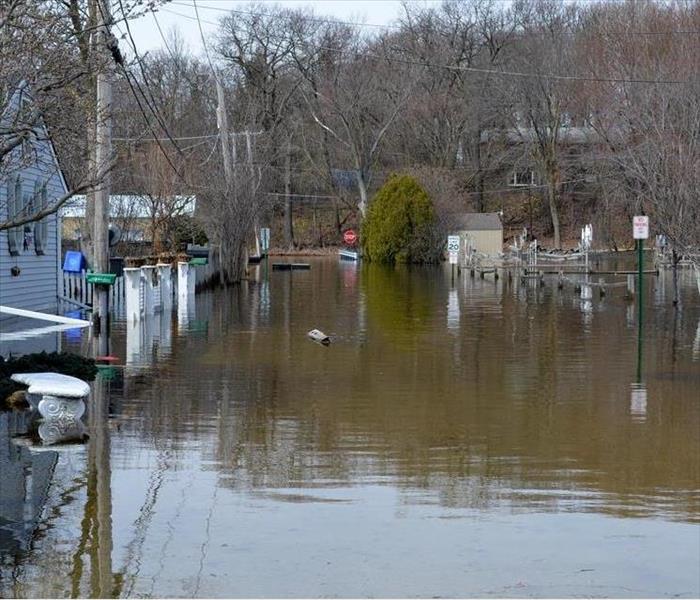Archived Storm Damage Blog Posts
Is Flood Damage Permanent?
8/15/2022 (Permalink)
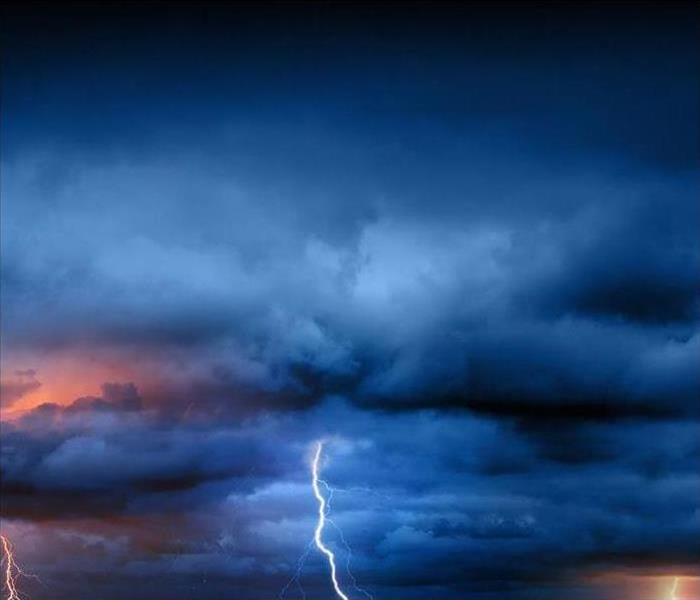 Spring and spring floods are on the horizon. SERVPRO is available to handle any water and storm damage your home incurs.
Spring and spring floods are on the horizon. SERVPRO is available to handle any water and storm damage your home incurs.
SERVPRO Offers Detailed Flood Damage Restoration After a Southern McHenry County Storm to Return Your Home to Pre-Damaged Condition
There are many exciting details about Southern McHenry County, IL, including being one of the state's largest historic districts. Whether visiting the region or looking to relocate, you will have incredible waterfront nightlife, stunning outdoor parks, and amazing river views. There is always something to explore, including plenty of restaurants, bars, and local events.
Restoration and Cleaning
After a Storm, Southern McHenry County Residents Count on SERVPRO for Effective Flood Damage. Flash-flooding that happens during a storm can ravage your interior. Whether you have significant flooding in your basement or the first floor of your home, SERVPRO features water restoration technicians to quickly restore your Southern McHenry County property. Even if it does not seem as though your contents, furnishings, and building materials are salvageable, we have methods to save as much as possible.
When addressing your flood damage in Southern McHenry County, we enlist one or more of these options for restoration:
- Submersible pumps that help to pull out high-level water
- Industrial-strength extractors mounted on our Fleet of trucks can handle hundreds of gallons of water riddled with debris.
- Professional-grade dehumidification and drying equipment
- Moisture detection equipment
Call SERVPRO of Southern McHenry County at (847) 516-1600. We're Faster to Any Size Disaster!
Even small storms can cause a great deal of damage in Southern McHenry County
3/25/2022 (Permalink)
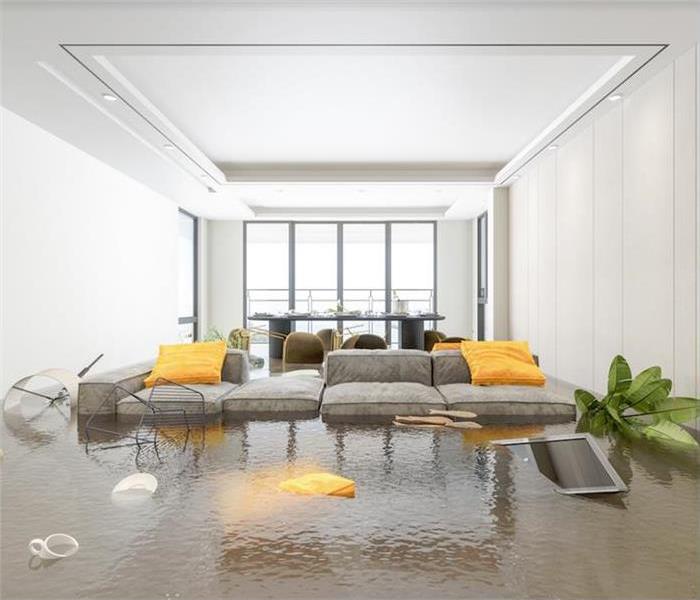 Did your home suffer flooding from a storm? Team SERVPRO can help with BOTH water removal and remediation services.
Did your home suffer flooding from a storm? Team SERVPRO can help with BOTH water removal and remediation services.
There are dozens of severe storm events across the country every year. Many of those can cause hundreds of millions of dollars in damages to homes, businesses and infrastructure. These events overwhelm local resources and that is when SERVPRO really shines!! We love to turn these towns GREEN!
Realizing that your Southern McHenry County home or business has sustained damage due to a storm is hard to deal with. What do you do? Who do you call?
There is one bit of advice that we can give you that can save you thousands of dollars; Call SERVPRO of Southern McHenry County fast!! 847-516-1600. Water damage doesn't just sit in your home and business. It spreads, everywhere. It wicks up the walls, into adjacent rooms. It even evaporates into the air and can cause "secondary damage" to areas of your building you are not even aware of.
Even after you have sucked up the visible water off the floor and out of the carpet, water is still causing more damage every minute.
SERVPRO of Southern McHenry County has the training, experience and equipment to get your building stabilized fast and minimize the damage that water causes. Call us today at (847) 516-1600.
Southern McHenry County Homes Require Fast Extraction After Flooding
3/22/2022 (Permalink)
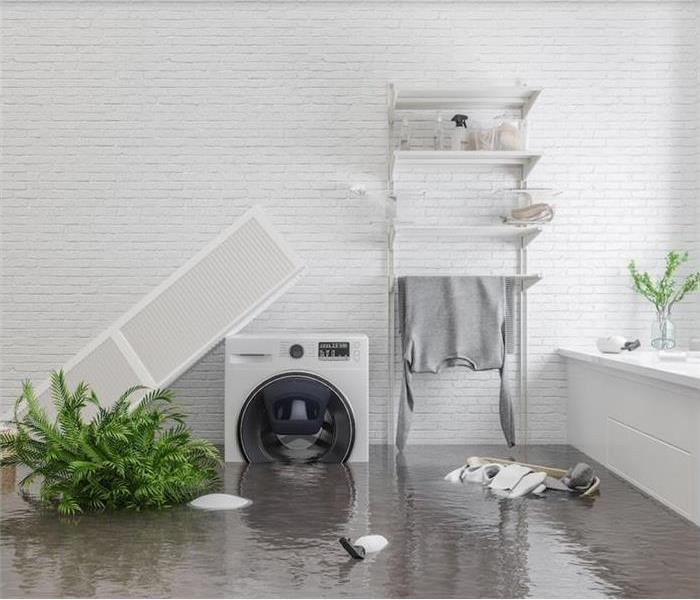 When flooding affects your home, the situation needs to be handled with haste to avoid additional damages. Team SERVPRO is standing by 24/7.
When flooding affects your home, the situation needs to be handled with haste to avoid additional damages. Team SERVPRO is standing by 24/7.
Flood Damage to Southern McHenry County Homes Leaves the Need for Several Types of Water Removal
Water removal is among the most immediate needs a house has after flood damage. Leading mitigation specialists of our SERVPRO team arrive fast to begin emergency services like these to mitigate loss and prevent greater harm to the structure.
Clearing Standing Surface Water
When people consider flood damage in Southern McHenry County homes and businesses, it is typical to visualize several inches or more of standing water. When these threats are consistent throughout the property, several extractors and water removal devices are necessary to help. Some of the equipment we use includes:
- Truck-mount extractors
- Trash pumps
- Submersibles
- Wet vacuums
Draining Trapped Water
Floodwater can find its way into structural cavities and assemblies the same as moisture migrates through open areas. When pooling results within these systems, weep holes and controlled demolition are used to regulate the draining of trapped water and better promote the circulation of dry air into the exposed cavity.
Capillary Suction
The capillary suction process results from deploying devices like drying mats on hardwood and engineered wood flooring. When water has penetrated the surface of these flooring types but not yet chemically bonded with the cellulose of the wood, water can still be pulled to the surface for removal with drying tools.
Deep Moisture Extraction
Another possible method of removing water from affected materials after a flood is the need to pull moisture from carpeting and padding. Carpets are a standard installation for modern homes, and they rapidly absorb standing water and humidity in a room. Using tools like carpet wands or weighted extractors, we can remove trapped moisture in layers of carpet floors.
Cleaning up after water damage incidents and flooding requires a team of professionals able to understand the urgent needs of a property and the best water removal services to manage the threats. Our SERVPRO of Southern McHenry County, professionals have 24/7 availability for storm damage restoration and repairs. Call today at (847) 516-1600.
Prepare for Southern McHenry County Storms to Prevent Flood Damage
3/22/2022 (Permalink)
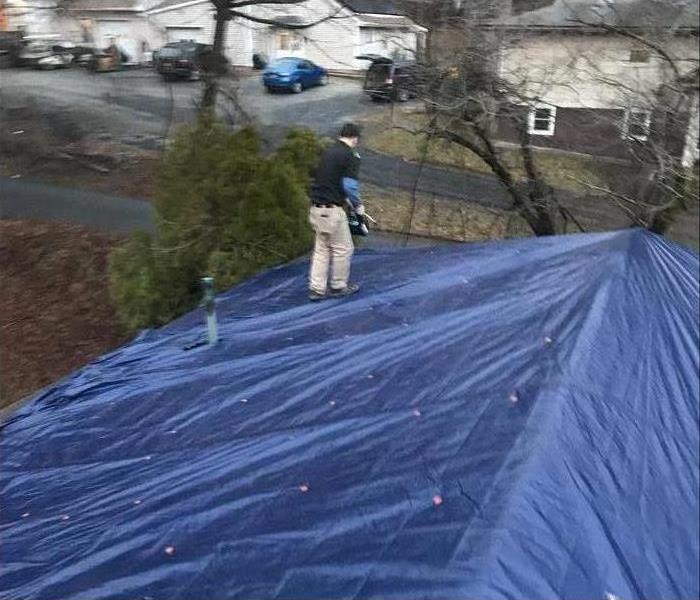 Plan emergency measures for flooding of your Newburgh home--Call SERVPRO to prevent secondary water damage like covering exposed roofs from rain.
Plan emergency measures for flooding of your Newburgh home--Call SERVPRO to prevent secondary water damage like covering exposed roofs from rain.
If Storm Flood Damage Occurs, Call SERVPRO of Southern McHenry County for Restoration!
Major storms and natural disasters are often sudden and unpredictable. Because of this, Southern McHenry County residents should always be prepared in an emergency flood situation. Should you find yourself dealing with a leaking roof from storms or floodwater coming into your home, SERVPRO is here to assist. We know what it takes to navigate home floods carefully, and We’re Faster To Any Size Disaster.
If you have been unable to think about how various disasters and storm flood damage in Southern McHenry County could impact you, SERVPRO challenges you to take the following steps to ready a plan:
Making a Plan
- Map out evacuation routes – mark all hallways, stairwells, and emergency exits.
- Keep important numbers handy – this includes your insurance agent should your home encounter damage.
- Know your property’s systems – always know how to turn off your power as well as the main water line should there be a damage issue.
- Have a trusted team for restoration – SERVPRO is available 24/7, and we arrive within hours of your call to start board up, tarping, water removal services, and anything else necessary.
By having our certified water restoration technicians (WRT) on your flood damage project, you will have all bases covered for debris removal, water extraction, drying, and odor control. We can cover exposed storm-damaged roofs with tarps to keep out the elements. The goal is to return your property to a state of normalcy while ensuring no moisture or bacteria from the floodwater gets left behind.
Controlled Demolition
Soggy drywall, damaged subfloor, soaked carpeting, and many porous contents will require disposal after contacting contaminated floodwater after a storm. We handle removing and replacing all unsalvageable building materials to return your interior to pre-flood condition whenever possible. This may include new flooring, flood cuts to replace discarded drywall, and more.
SERVPRO of Southern McHenry County are there whenever you have flood damage after a sudden storm. Call us at (847) 516-1600, and we can dispatch a crew to your property as soon as possible.
Why Your Business Needs Flood Coverage
2/3/2022 (Permalink)
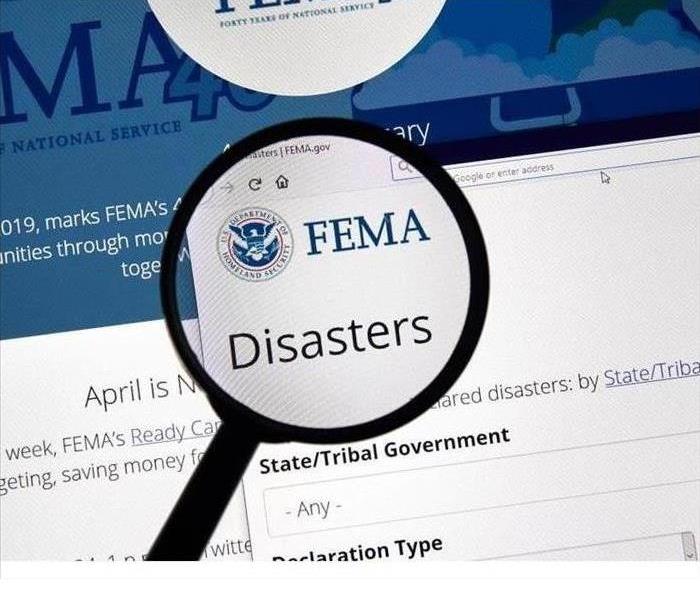 Purchase your flood coverage through FEMA
Purchase your flood coverage through FEMA
Flood Coverage Through FEMA Is Necessary
Your commercial insurance policy includes coverage for fire and wind. However, it does not cover the cost of flood damage. If you want flood coverage for your McHenry County, building, you need to purchase a separate policy through FEMA.
This flood policy is called the National Flood Insurance Program. While paying an extra insurance bill each month sounds like a pain, the cost is worth it in the long run.
Defining Floods
A flood is essentially excess water on a normally dry area. According to the NFIP definition, a flood can result from any of the following:
- Mudflow
- Overflow of tidal or inland waters
- Collapse of land along a shore
- Runoff of surface waters
Picking Deductibles
When you sign up for commercial insurance, you must also decide how high of a deductible you are willing to pay. Higher deductibles reduce your claim payments but also lower your premiums. Your insurance agent can help you decide which deductible is best for you.
Understanding Flood Coverage
Before you buy flood insurance, you should understand exactly what it does and does not cover. You can use building property flood coverage to pay for damage to permanently installed items such as bookcases, panels, cabinets, and carpet. Air conditioning systems, water heaters, and electrical equipment are included in this coverage, as well.
Personal property flood insurance covers any items you own and use in your business, such as portable dishwashers, microwaves, and furniture. You can use the insurance money to replace these assets or to hire storm cleanup experts who can restore your belongings.
However, your insurance provider will reject your claim if the flood damage resulted from a drain backup that you failed to address. Items outside of your building, including fences and septic tanks, are also excluded from coverage.
Flood coverage through the NFIP is a necessary addition to any commercial insurance policy. Because flood cleanup is often costly, and inadequate insurance policy could cause your business to shut down permanently.
SERVPRO Storm
2/3/2022 (Permalink)
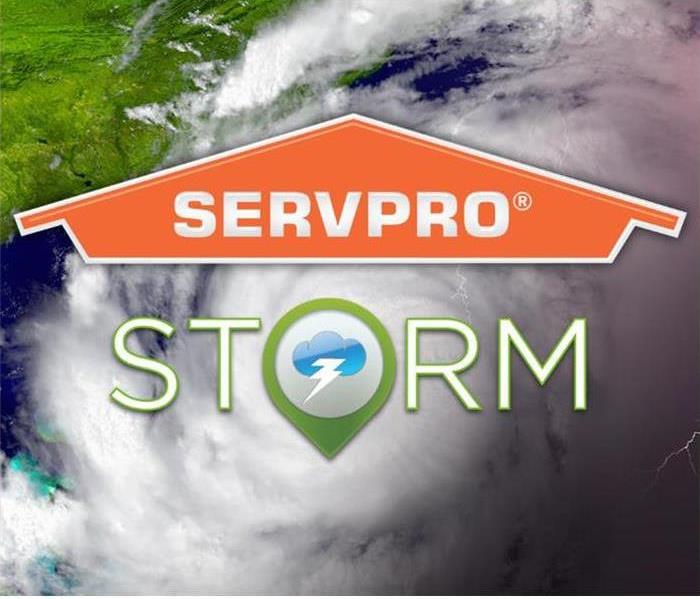 No matter the size of the disaster, SERVPRO Storm Team can assist a franchise with capacity and resources to get the damages restored!
No matter the size of the disaster, SERVPRO Storm Team can assist a franchise with capacity and resources to get the damages restored!
No matter the size of the disaster, SERVPRO Storm Team can assist a franchise with capacity and resources to get the damages restored!
There is a long list of reasons why SERVPRO is the premier choice for cleanup and restoration. We brag about our efficiency and professionalism, our technology and equipment. But something that sets us even more apart from the others is our ability to respond to the volume that a major storm event causes.
A large storm event caused by flood, fire, or other natural disaster that surpasses the local franchise's capacity to service in a timely manner can be taken care of by the SERVPRO System. When a storm event like this occurs, The SERVPRO System can provide state of the art restoration services through the best area coverage in the restoration industry. SERVPRO Storm Teams mobilize their crews and are deployed with additional equipment and crews to service property owners, no matter the loss size.
When a storm event occurs and there is major damage, SERVPRO comes together as One Team to help!
Protect Your Pipes from Cold Weather
1/26/2022 (Permalink)
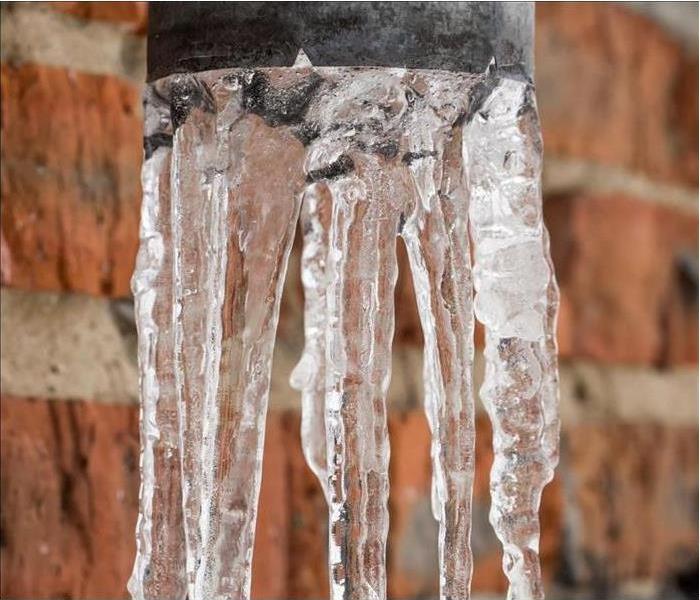 Extreme cold weather can cause pipes to freeze and burst.
Extreme cold weather can cause pipes to freeze and burst.
In winter, it is important to take the proper steps now to protect our homes from busted pipes and prevent the stress associated with a major water loss. Extreme cold weather can cause pipes to freeze and burst. In general, pipes are more likely to freeze when the temperature is below 20 degrees Fahrenheit. The resulting water damage can be extensive. Outdoor pipes and pipes in unheated areas of the home can freeze if they are not properly insulated or if temperatures are severely cold.
Outdoor pipes most likely to freeze include:
- Outdoor hose bibs
- Swimming pool supply lines
- Water sprinkler lines
Pipes in unheated or partially heated areas are also at risk of freezing, including:
- Basements
- Crawl spaces
- Garages
If your pipes do freeze or burst, immediate action is necessary to prevent additional damage to your property. SERVPRO of Southern McHenry County have the winter storm experience, expertise, and the resources to remediate damage caused by winter weather.
Dealing with Frozen Pipes and Ice Damage in Southern McHenry County Homes
1/21/2022 (Permalink)
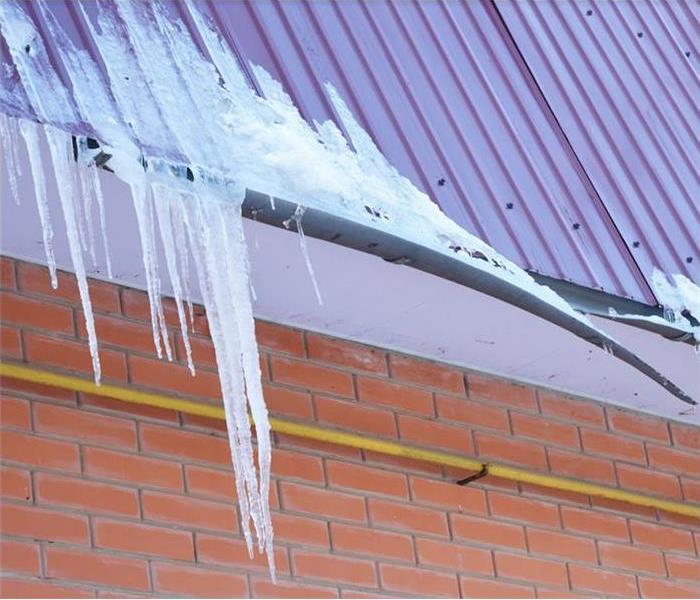 Ice dams in the winter can certainly cause some storm damage to your home. Contact SERVPRO for prevention methods or to mitigate current damage.
Ice dams in the winter can certainly cause some storm damage to your home. Contact SERVPRO for prevention methods or to mitigate current damage.
Prevention Strategies in Southern McHenry County can Help with Storm Damage
It is the time of year when frozen pipes and ice dams cause problems for homeowners in Southern McHenry County. Winter storms not only bring lots of ice and snow, but the outdoor temperatures also drop. If your home is vulnerable to freezing temperatures, you could experience thousands of dollars in damage from burst water pipes. There can be subsequent damage to the insulation inside walls, the flooring, and the contents.
SERVPRO provides repair and drying services for Southern McHenry County frozen pipes and ice dams. We can help thaw frozen pipes, arrange for plumbing repairs and provide water removal and drying after a water leak caused by thawing water pipes.
When water freezes inside copper or plastic pipes, the ice expands, cracking the water lines. You may notice a joint that has opened or a long thin crack along one of the pipes. Once the ice inside the water pipe melts, water will stream out of the cracked line at full pressure until someone turns off the main water supply.
SERVPRO recommends that homeowners consider winter preparedness steps to help prevent frozen pipes:
- Install pipe insulation on all water pipes, especially those inside walls or near exterior walls
- Open cabinets in bathrooms and kitchens with water pipes on cold days to allow warm air circulation
- Allow water to drip from a faucet to prevent freezing
- Increase the indoor temperature on chilly days
- Maintain the same temperature during the day and night
- Leave the temperature set to no lower than 55 degrees if you are going to be away
- Add insulation to attics, crawl spaces, and basements
- Seal cracks around windows and doors to reduce cold drafts
Our team at SERVPRO can help with water removal services, water damage restoration, and water damage remediation after a water leak caused by cold weather and frozen pipes.
Call SERVPRO of Southern McHenry. We can help 24/7. Call (847) 516-1600.
Basement Waterproofing
1/20/2022 (Permalink)
Basement Waterproofing
Basement Waterproofing is needed anytime a structure is built at ground level or below ground. Waterproofing and drainage considerations are especially needed in cases where ground water is likely to build up in the soil and raise the water table. This higher water table causes hydrostatic pressure to be exerted underneath basement floors and against basement walls. Hydrostatic pressure forces water in through cracks in foundation walls, through openings caused by expansion and contraction of the footing-foundation wall joint and up through floor cracks. Hydrostatic pressure can cause major structural damage to foundation walls and is likely to contribute to mold, decay and other moisture related problems.
Warning signs that you have waterproofing problems in your basement can include:
- Signs of Mold and Mildew Fungus - this can grow in damp or dark areas, and cause discoloration, or musty odors.
- Moldy Odors - This is the result of the decay process from mold, and dry rot.
- Peeling Paint – This is a sign that you have moisture problems and may have waterproofing issues.
- Damp Spots on Walls – Water has absorbed through your walls and you need to confirm the source of the water.
- White Substance on Basement Walls – This is a chemical breakdown of the bonding agent that holds your walls together. This white substance can be a sign of possible structural deterioration.
- Cracked Walls – These should be inspected to determine the exact cause.
- Rust on Appliances or Furniture Like furnaces – Rust is caused by a wet environment and can be a sign of waterproofing issues.
If you have on-going occurrences in your basement you may need to investigate on procedures to waterproof your basement. Mold remediation can be handled professionally but if the source is not repaired you will be dealing with the various signs above over and over again. If any of these signs sound familiar please make sure you look into fixing the source of the water intrusion instead of fixing the effects of the water damage time after time. It may cost money up front but it will save you money in the long run and help to maintain the structural integrity of the home.
Prepare Your Home For A Wind Storm: Top 6 Ways To Protect Your Home!
8/22/2021 (Permalink)
Top 6 Ways To Protect Your Home From Wind Damage
Wind storms can be very damaging to your home or property if you are not prepared. Unfortunately, we rarely get much warning before a large wind storm so it is critical to prepare your home ahead of time. Routinely checking, fixing or updating areas around your home can make the difference between a hundred dollars and thousands of dollars in damages.
Here are six ways to prepare your home before the next storm hits:
- Is your roof in good shape?
- Your shingles should be nailed down properly and all secured together.
- Replace any missing shingles immediately.
- Make sure your garage door is secure.
- Sometimes this means hiring a company to inspect your garage door to ensure it is properly secured and functioning well.
- Secure all outdoor items.
- Grills, patio furniture, trampolines, etc. These items can cause a lot of damage if the wind is strong enough to pick them up.
- Ensure your gutters are properly secured and clean them out regularly.
- Clogged cutters can create water damage to your house. They are also more likely to break in a high wind storm if they are weakened by heavy debris.
- Are your windows storm proof?
- Installing storm proof windows can make a big difference in protecting your home from high winds and hail from a storm.
- If you don’t have storm proof windows, consider installing steel or aluminum shutters on your windows or sliding doors to protect them from flying debris.
- Remove or trim/maintain trees around your home.
- Trimming your trees of dead wood can help prevent large branches falling during a wind storm.
Be sure to routinely check and maintain your home so you are ready before the next storm hits. However, if you do find yourself in need of help after a storm, call SERVPRO of Southern McHenry County we specialize in restoration and water damage repair in the McHenry County area. Call us after a storm and let us take the stress off of your family! We will make sure it's "Like it never even happened."
We can be reached 24/7 at 847-516-1600
How to save the deductible after getting water damage
7/28/2021 (Permalink)
Water obeys the law of gravity. Therefore, look down when looking for water damage.
Water damage payment may include work you can do yourself
If you incur water damage and get reimbursed by your insurance company, you can avoid paying the deductible. Hire yourself as a contractor.
Unpleasant return home
Elmer and his family went on vacation for a week. When they returned, they saw the upstairs bathtub had overflown. This created water damage both upstairs and downstairs. Water soaked the floor and drained to the kitchen downstairs. Apparently someone left the drain closed and the faucet had a slow leak.
Elmer called SERVPRO of Southern McHenry County and his insurance company, which was the right thing to do. SERVPRO came out, assessed the water damage and presented Elmer with an estimate. $12,000. Elmer has a $1,000 deductible on his homeowners’ insurance.
Scope of work
The water damage remediation work includes removing soiled drywall, studs, flooring and ceiling materials. The project second phase involves removing airborne mold particles and getting mold counts down to a healthy level. The third phase involves installing new studs, drywall, flooring and ceiling materials. The fourth and final phase involves painting the new drywall.
SERVPRO did the water damage remediation work he and the SERVPRO Office Manager agreed they should do. This includes all work listed above, except for the painting. Elmer felt he could do that himself. Upon completion, Elmer’s insurance company paid him $12,000. He paid SERVPRO $11,000. The remaining $1,000, which is his deductible, covers his cost for painting the new drywall.
He does some of the work
Elmer is an honest man. He buys the paint and paints the new drywall. He is also a businessman. He wants to reduce spending every chance he can get. Pocketing the deductible and doing some work himself helps Elmer get his house back in order and save some cash.
If you incur water damage from a storm event, do not delay. Your top priority is finding and stopping the leak. You can work with the insurance company and water damage remediation experts to create the scope of work and arrange payment. You can save the deductible by doing some of the work yourself.
Summer Storm Safety
3/23/2021 (Permalink)
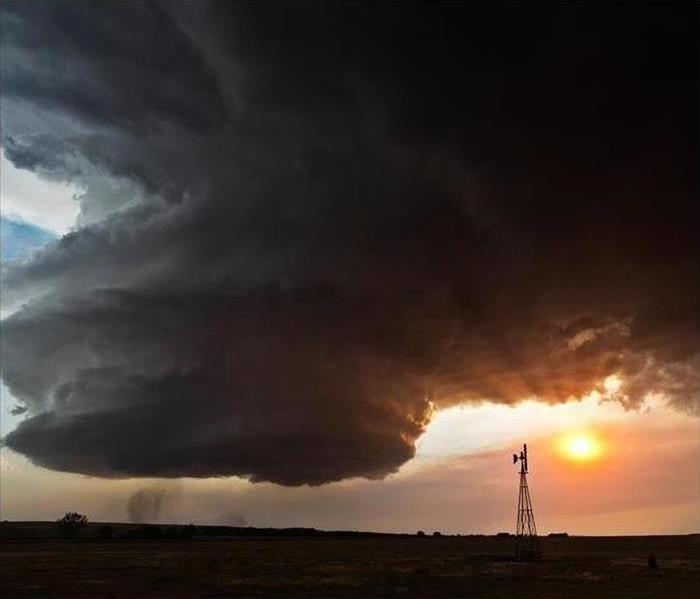 Picture of thunderstorm occurring
Picture of thunderstorm occurring
Summer arrived with greenery and colorful flowers. However, the season can also bring severe weather. The American Red Cross wants everyone to know what steps they can take to stay safe if dangerous weather is predicted for their community.
TORNADOES Summer can be the peak season for tornado activity. Tornadoes occur mostly on warm days between 3:00 and 9:00 p.m. However, tornadoes can occur anywhere, at any time of the year, at any time of the day. The Red Cross has safety steps people should take now to be ready if a tornado warning is issued for someone’s neighborhood:
- Know your community’s warning system.
- Pick a safe room in your home where family members can gather if a tornado is headed your way. This should be a basement, storm cellar or interior room on the lowest floor with no windows.
- Prepare for strong winds by removing diseased and damaged limbs from trees.
- Move or secure lawn furniture, trash cans, hanging plants or anything else that can be picked up by the wind and become a projectile.
- Know the tornado danger signs – dark, often greenish clouds, a wall cloud, cloud of debris, large hail, a funnel cloud or a roaring noise.
THUNDERSTORMS Thunderstorms are most likely to happen in the spring and summer, during the afternoon and evening. However, like tornadoes, they can happen anywhere, at any hour of the day. Every thunderstorm produces lightning, which kills more people every year that tornadoes or hurricanes. The Red Cross has steps you can take if a thunderstorm is predicted for your area:
- If thunder roars, go indoors. If you can hear thunder, you are close enough to be in danger from lightning.
- Watch for storm signs like darkening skies, flashes of lightning or increasing winds.
- Postpone any outdoor activities. Many people who are struck by lightning are not where it is raining.
- Take shelter in a substantial building or a vehicle with the windows closed. Shutter windows and close outside doors securely. Stay away from windows.
- Do not take a bath, shower or use plumbing.
FLOODING Summer can be a time of year for flooding. Communities in the Midwest and south have already seen floodwaters inundate neighborhoods. Snow melt and heavy spring rains fill rivers and streams and flooding can occur. Flash floods occur suddenly when water rises rapidly along a stream or low-lying area. People should be prepared to evacuate at a moment’s notice and head for higher ground when a flood or flash flood warning is issued. Other safety steps include
- Stay away from floodwaters. If you come upon a flowing stream where water is above your ankles, stop, turn around and go another way. Six inches of swiftly moving water can sweep you off of your feet.
- If you come upon a flooded road while driving, turn around and go another way. If you are caught on a flooded road and waters are rising rapidly around you, get out of the car quickly and move to higher ground. Most cars can be swept away by less than two feet of moving water.
- Keep children out of the water. They are curious and often lack judgment about running water or contaminated water.
- Be especially cautious at night when it is harder to recognize flood danger.
WOW! What a Winter
3/10/2021 (Permalink)
Wow! What a Winter!
Spring is just around the corner. Are you ready?
With spring comes more rain, as if we needed any more. That leaves only a few weeks to be ready for summer.
As we are all very aware, this has been a brutal winter. I recommend taking a close inspection of your facilities. With the winds, heavy rains, snow and the below normal cold there is good chance damage was done. Preventative maintenance check list
• Door and window seals
• Rain gutters
• Rain gutter drains
• Roof
• Flashing around chimneys
• Roof drains
• Clear yard debris
• Clean parking lot drains
• Clear all exterior drains When inspecting the roof, look for broken or missing shingles or any damaged components. Check the flashing around any pipes or vents that come through the roof. The rain gutters need to be clear of debris.
When inspecting the exterior walls of your building, look for any damage to the siding, deteriorated or missing caulking around the doors and windows, then make all necessary repairs.
Take a walk around the foundation, checking the condition of the vents, making sure the drain systems are free of debris and the grade allows the water run away from the building. Preventative maintenance check list
• Foundation grading
• Leaking plumbing
• Missing insulation
• Clean the area around the sump pump
• Test the sump pump
• Check the foundation vents
• Make sure the vapor barrier is intact
• Check for pests
• Make sure the plumbing is properly insulated
Spend some time in the crawl space look for standing water, leaking pipes, pests or fallen insulation.
If you have any questions or need help in any of these areas, let me know and I will gladly be of assistance. As a FREE service, we would be happy to meet with you and your maintenance staff to discuss which areas to check, and the red flags that can alert you to issues before they affect your business.
The Tip of the Month Quiz
1. When inspecting the roof what are you looking for?
2. Can mold form inside walls if moisture seeps in?
3. Can standing water under a building cause health concerns?
Spring Storm Safety
3/4/2021 (Permalink)
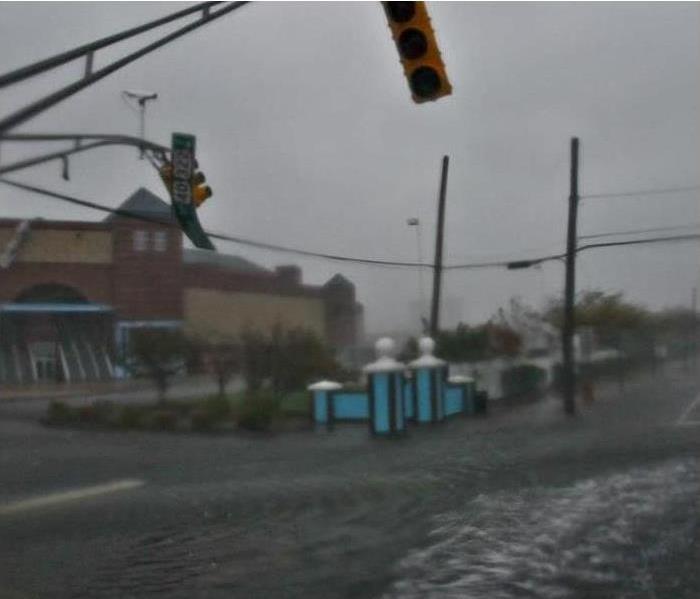 Spring Storm Safety
Spring Storm Safety
Be Aware of the Weather Conditions
The most important thing you can do is to stay aware of weather conditions in the areas that you will be traveling. Tune into the local radio stations, watch the weather channel, or go to weather-related websites that will cover the area along your route. Awareness is essential part of spring storm safety, not only during tornado season, but during the winter as well, when snow and ice can make the roads a serious danger. Staying informed of any potential for severe weather will help you plan a safe route.
Stay Out (or Get Out) of the Danger Zone
If you can, stay away from any potential dangerous weather by planning your route accordingly. If your route goes through an area that shows a potential for storms, check the map and find a route that helps you avoid the situation entirely. If your destination is in the area of the storm, see if you can leave early to miss the storm or wait it out until the potential for hazardous weather has passed. It may not always be possible, but being proactive and avoiding the hazardous conditions altogether is the best way to stay safe during storms and tornadoes.
Stay Away from Overpasses!
If you do find yourself in a storm, never go for the myth of hiding under an overpass. For years, drivers believed this is one of the best places to wait out a storm, but in fact it’s one of the worst. Overpasses can become wind-tunnels, interacting with a tornado to create even more powerful winds. Stay away from overpasses, whether you’re in your cab or on the ground. Which brings us to another topic: whether or not to leave your truck...
Should I Stay or Should I Go?
This topic is highly-debated among truckers in the industry. Some swear by staying in your cab, while others advocate leaving the truck and seeking low ground like a ditch or valley. It seems the best answer depends on the situation itself. Sometimes, it may be best to stay put and let the cab be your shelter, while other situations call for leaving the truck. However, if there is real shelter nearby, like a building or home, this option is always better than staying in your truck or hiding in a ditch.
Benefits of Staying in the Truck
Inside your cab, the truck will act as your shelter, protecting you from hail, lightening, and debris. Keep your seatbelt on, as this will protect you if the winds become strong enough to overturn your vehicle. You should also crouch below the line of the windshield to protect yourself from flying debris.
Benefits of Getting Out
Getting out and hiding in a ditch puts you below the strongest winds and flying debris. If winds hit your truck hard enough, it could overturn, in which case you will be thankful you’re not inside. If you choose to get out, make sure you are far enough away from the truck in case it is pushed over.
In the end, it really comes down to being informed and aware. The #1, undisputed spring storm safety tip for truckers is to avoid the severe weather altogether. Yes, you need to do your job and be a dependable trucker, but taking risks with your life just to make your delivery is simply not worth it.
No reasonable person will be upset with you because you chose to avoid severe weather. In fact, most people will applaud your regard for safety.
Deductible Dilemma
1/18/2021 (Permalink)
Deductible Dilemma
Just last week SERVPRO of Southern McHenry County received a call from Mrs. homeowner who had a dishwasher malfunction on the main level. She was told to by her insurance provider to call us to inspect the damage. The water proceeded to obey the laws of gravity and went into the basement below affecting the drywall ceiling and a small amount of flooring. She had laminate flooring in the kitchen on the main level. SERVPRO arranged to come by after 5:00 PM when she was home from work. Enter Mr. homeowner on stage left. The following conversation followed the lines of "well I don't really see that much damage," and "I don’t want to pay a deductible". SERVPRO stressed that our visit, even on after hours time, was FREE of charge. In the end, SERVPRO was not allowed to look at the loss. So what next? It is a fact that before the sub floor under the laminate in the kitchen dries, there will be mold growth. It is highly likely that there will be mold growth on the back side of the ceiling drywall in the basement and walls behind the main level kitchen cabinets before it dries. At this point, any material removed by a mitigation company would result in full replacement. If we had to pull any laminate flooring in the kitchen, all the corresponding laminate in the kitchen/dining room, and living room would be replaced to match. Any drywall removal would result in new drywall, texture, and painting of all the affected area. All affected materials left in place would be dried to eliminate the chance for mold growth. So, two weeks down the road, maybe something starts to smell. If SERVPRO is called back, the loss then is considered not sudden and catastrophic as the homeowners decided not to take action. There is a very high probability of absolutely no coverage at all at this point and the homeowner is stuck with paying out of pocket, or permanent home damage. In addition, SERVPRO documents the drying process, keeps all photos and drying logs in a file, and leaves the homeowner with drying documentation. Now, when the home is sold and water damage has to be disclosed, the potential buyers can see it was handled professionally and the sale can proceed. Remember, free is free, let SERVPRO at least help you determine your best options.
September Is National Preparedness Month: What Are You Doing To Be Prepared?
8/25/2020 (Permalink)
National Preparedness Month is officially here!
National Preparedness Month (NPM) is recognized each September to promote family and community disaster planning now and throughout the year. As our nation continues to respond to COVID-19, there is no better time to be involved this September.
Have you and your family sat down and discussed an emergency plan at home?
If not, you should plan a time this month to all sit down together and come up with an emergency plan! Plan out various escape routes in the event there is a fire or some other disaster in your home. This is especially important to do if you live in an area of Southern California where wildfires are common - September does bring the Santa Ana winds after all! When making plans for escape routes and for evacuations, don't forget to include your pets! If you do any practice escape drills, practice with your pets; You don't want to forget about your furry friends!
You should also be sure to create an emergency pack if you don't already have one. An emergency pack can be used if your home loses power or if you are forced to evacuate your home. Not sure what to put in your kit? We've already created a list for you here.
Know the facts.
Disasters can be pretty scary, especially when they're unexpected. Take some time this month to learn about various disasters that can happen where you live. Ready.gov has a list with information regarding most forms of disasters.The more you know, the more prepared you'll be. Being prepared can help you remain calm when disaster strikes!
Worried About the Claims Process? Don't Be.
7/30/2020 (Permalink)
Who to call: 847-5161600
No homeowner or commercial business expects to experience a water loss. It’s important to know who to call immediately following your loss. Most likely you’ll contact your insurance agent who will direct you to an insurance adjuster. Next you will want to find someone to take care of emergency services, mitigation, and restoring your property back to preloss condition.
SERVPRO of Southern McHenry County is certified and trained to handle emergency mitigation and restoration services in forms of water, fire, smoke, and mold damage.
What to expect when we arrive:
Our trained professionals will arrive and survey the damage. Before performing any services, we will discuss the plan of action and upon your approval, we will begin emergency services in order to make sure the home is safe. Every step we take will then be reported to the insurance adjuster as it happens.
What to expect when looking at an estimate:
Your insurance adjuster will decide whether the loss is worth a claim or not. The software we use for estimating is a universal program that takes all aspects of the trade into consideration. The estimates directly relate to the claim itself and therefore does not take into consideration any preloss structural conditions. The estimate will be made by the production manager overseeing the job and then reviewed by the adjuster. The production manager on that job will walk you through the estimate and keep you consistently updated with improvement. Upon completion, we will walk you through the entire job and have you sign a satisfactory completion form.
What to expect when paying:
Claims are made through your insurance company and therefore the homeowner will usually only pay their deductible. Deductibles are based on your policy with your insurance company. This is what you pay towards the claim. For example, if your deductible is $500, you will pay $500 toward the claims final cost. We work directly with insurance companies and can be paid through them. We accept credit cards and checks.
High Deductible Means Self-Pay for Water Damage
3/30/2020 (Permalink)
When it comes to dealing with insurance and water damage, homeowners often get frustrated. Insurance companies march to the beat of their own drum, and aren’t as concerned about the homeowners’ needs as much as they are concerned about what makes financial sense to them. This oftentimes leads to homeowners paying out of pocket for many of the services that they have to deal with when it comes to things like water damage and mold damage.
For one homeowner in Cary, their deductible was so high that it seemed like all hope was lost for being able to afford the repairs that they’d need. They woke up one morning and noticed wet carpet in the hall and followed it into their son’s room. They called a plumber, who came out and found that their furnace was leaking into the carpet. He fixed the leak but recommended calling a professional restoration company to make sure there was no mold.
They called their insurance company, who recommended SERVPRO of Southern McHenry County to get the job done. Unfortunately, their insurance also let them know that their deductible was $5000, so unless the damage was severe, they would be better not filing a claim.
Our Owner, Robert Hammerschmidt, made it out to the job first to check out the damage. He walked through loss with the owner to determine the course of action. And then Nick Frank, the Crew Chief, brought his team of expert technicians to the home. As soon as we got there, we got to work.
We found mold underneath the home, but thankfully it was newer mold so we were able to kill it with anti-microbial. From there we removed some drywall in the hallway and some baseboard in the son’s room.
The homeowners were so happy that SERVPRO of Southern McHenry County was able to work with them to make sure the price was affordable. They were also happy that we worked to save as much of the home as we could so they would not have to pay for that much demolition. They promised to call us again if the need arose!
Three Tips How to Protect Your Business During an Thunderstorm
2/23/2020 (Permalink)
When thunderstorms march across Southern McHenry County, they can cause serious damage to your business. Power outages, downed tree limbs and flooding from a torrential rain storm are all possibilities. However, there are several strategies you can use to protect your business and employees from harm when these storms appear.
- Keep Your Lightning Rod Maintained
If your business is located in a tall building that may attract lightning, then maintaining the lightning rod can be essential. Have the rod checked annually for damage and ask your certification professionals to verify that it is up to code. If your business is located in an area where lightning is common, it is wise to have the unit cleaned and inspected at least twice a year.
- Maintain All Trees on the Property
High winds can turn tree limbs into projectiles that may shatter your building’s windows and cause serious injury to your customers or employees. While trees can add aesthetic beauty to your property, take care to have them trimmed and maintained so dead branches do not detach and strike people entering your business below. Trimming trees away from your building’s power lines can protect its power source during a thunderstorm, where they might otherwise become entangled.
- Have a Flood Plan in Place
A heavy rain storm can cause flooding, which can happen suddenly and cause a considerable amount of damage to your business. Having a flood plan in place can prevent this, especially in the case of mitigation services. Contacting a storm damage and flood cleanup service before the wet season can be a wise choice because if your building should experience flooding, you will have help on hand right away instead of trying to find it during a disaster.
Your Southern McHenry County business can take a pounding during a rain storm that includes wind or hail. Knowing how to protect your employees, customers and property can give you an edge over bad weather, no matter when it might happen.
Call SERVPRO of Southern McHenry County at 847-516-1600 to have an Emergency Ready Profile (ERP) done for your business.
WEATHER ALERTS: Tools to keep you safe
2/3/2020 (Permalink)
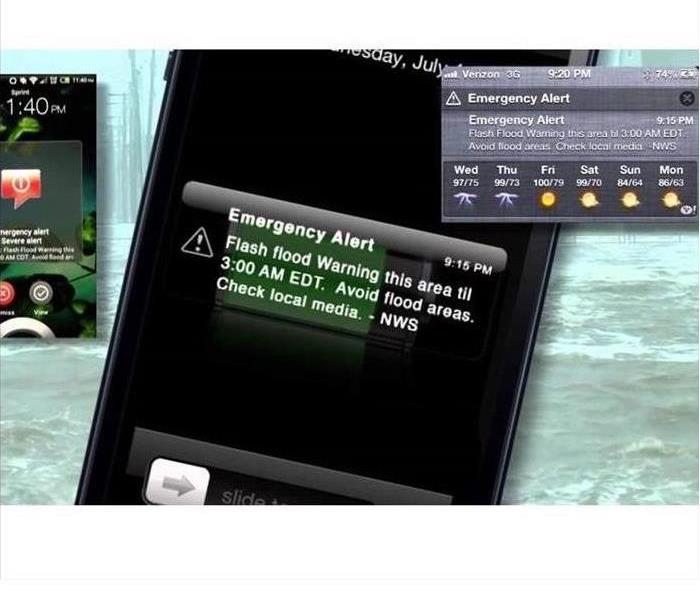 Alert Bad Weather
Alert Bad Weather
One of the best precautions you can take is to purchase a good quality weather radio. A weather radio is designed to alert you to potentially dangerous weather situations, like an approaching tornado. It allows you to be warned ahead of storms, providing you time to seek shelter. A weather radio is the most reliable source for weather alerts.
Weather radios have made many advancements over the years and are very affordable. Most basic weather radios average around $30 and can be programmed to only alert you for the weather alerts you chose.
When shopping for a weather radio, look for the following key features.
- Reviewable alerts (you can scroll through alerts and turn off the siren for alerts you do not wish to hear).
- Specific Area Message Encoding (SAME) alert programming (alerts when specific counties are threatened, ensuring you only receive alerts for your county).
- Ease of programming
If you need help programming your weather radio, you can always contact your local National Weather Service Office or additional information, including county codes for you state, visit the NOAA Weather Radio website at https://www.weather.gov/nwr&ln_desc=NOAA+Weather+Radio/.
Understanding WEAS
Wireless Emergency Alerts (WEA) are emergency messages sent by authorized government alerting authorities through your mobile carrier. Government partners include local and state public safety agencies, FEMA, the FCC, the Department of Homeland Security, and the National Weather Service. Alerts received at the right time can help keep you safe during an emergency. With WEA, alerts can be sent to your mobile device when you may be in harm’s way, without need to download an app or subscribe to a service. WEA may share:
- Extreme weather warnings
- Local emergencies requiring evacuation or immediate action.
- AMBER Alerts
- Presidential Alerts during a national emergency
A WEA will look like a text message. The WEA message will typically show the type and time of alert, any action you should take, and the agency issuing the alert. The message will be no more than 90 characters.
Visit https://www.ctia.org/wireless-emergency-alerts to learn more about Wireless Emergency Alerts, including how to determine if your mobile device is WEA-capable.
What you need to know before filing a claim on your home…
1/31/2020 (Permalink)
Filing an Insurance Claim
When a disaster hits your home, you usually panic and call your agent or insurance company to file a claim. Sometimes that isn’t a good idea because your deductible may be higher than the damage itself. It is best to get an estimate from a restoration company like SERVPRO of Southern McHenry County before you call to file a claim.
Here are some basic rules to follow when filing a claim:
- Check with your agent or assigned adjuster to verify you’re covered for the claim. After heavy rains and hurricanes, many homeowners think they have flood insurance. Traditional homeowners insurance does not cover water damage caused by floods. It is a separate coverage underwritten by the federal government through the National Flood Insurance Program. If you file a claim with your insurance company for something that isn’t covered, the claim itself doesn’t go away from your record.
- If you’re a consistent claimant, your rates are going to be high. It isn’t unusual for a homeowner to file up to two claims in a 10-year period, but more than one or two in a three-year time span and the insurance company will think you’re a high risk.
- Don’t submit claims for what is really a home maintenance project (small incidents). Also, a better maintained home will get better premiums.
- Call a restoration company like SERVPRO of Southern McHenry County to provide free estimates on your damages. They will let you know if the damage is less or more than your deductible. Based on their estimates, you can decide whether or not to file a claim.
Contact your local SERVPRO of Southern McHenry County for free estimates on damages related to water, fire or mold in your home or business.
September Is National Preparedness Month: What Are You Doing To Be Prepared?
8/22/2019 (Permalink)
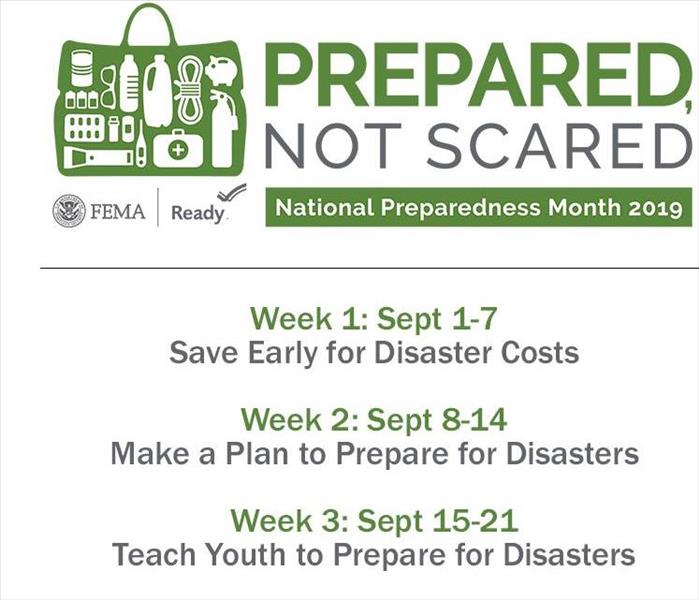 "Prepared, Not Scared." 2019 Theme
"Prepared, Not Scared." 2019 Theme
National Preparedness Month is officially here!
Now is the perfect time to start talking about all the ways in which you can be prepared!
Have you and your family sat down and discussed an emergency plan at home?
If not, you should plan a time this month to all sit down together and come up with an emergency plan! Plan out various escape routes in the event there is a fire or some other disaster in your home. This is especially important to do if you live in an area of McHenry County where tornadoes and heavy rains are common in August - in September, the county experiences less wind and less rain! There is a steep decline in stormy weather after the summer thunderstorms of August, and rainfall only adds up to 3.2 inches (82 mm) of rain over the course of about 8 rainy days. Now is the time making plans for escape routes and for evacuations, don't forget to include your pets! If you do any practice escape drills, practice with your pets. You don't want to forget about your furry friends!
You should also be sure to create an emergency pack if you don't already have one. An emergency pack can be used if your home loses power or if you are forced to evacuate your home. Not sure what to put in your kit? We've already created a list for you here.
Know the facts.
Disasters can be pretty scary, especially when they're unexpected. Take some time this month to learn about various disasters that can happen where you live. Ready.gov has a list with information regarding most forms of disasters. The more you know, the more prepared you'll be. Being prepared can help you remain calm when disaster strikes!
source: ready.gov/September
Deductible Questions
8/1/2019 (Permalink)
When SERVPRO of Southern McHenry County is called to a home or business to clean up from a broken pipe, water back up, roof leak or mold clean up (just to name a few examples), sometime there is a deductible to collect. What exactly is a deductible. We went to the Farmer Insurance website for a explanation.
"What is a deductible?
A deductible is the amount you’re responsible for in the event of a covered loss. In most covered loss cases, you are responsible for any amounts up to your deductible level and your insurance would cover anything beyond that up to your coverage limit. For example, if you select a $1,000 deductible and have a $4,200 covered loss, you would receive a claim payment of $3,200 after deducting the $1,000.
A homeowners deductible applies to each claim. If you have more than one claim in a policy period, you will be responsible for the deductible amount for each individual claim regardless of the number of claims you have during that policy period."
(Source: http://www.farmers.com/faq/home/#deductible)
Are you covered by your Insurance?
3/31/2019 (Permalink)
Are you covered by your Insurance?
This is a question everyone should ask them self, Do I understand my homeowner’s insurance?
This article is from Fox Business
"Insurance requires you to think about bad occurrences … medical problems, car accidents, emergency home repairs. But although it may sound pessimistic to dwell on what could happen (carpe diem, anyone?), it’s important to protect yourself from some of life’s biggest surprises When it comes to protecting your home, it’s not just about safeguarding against structural damage or theft—it’s just as much about feeling secure in where you live. If disaster strikes, your focus should be on reclaiming your sense of stability. The last thing you should worry about is money.
- What It Covers
A typical policy will pay for damage to your property and your possessions in the event of certain storms, fire, theft or vandalism. Like renter’s insurance, it also provides liability coverage if someone gets hurt on your property and decides to sue. Homeowner’s insurance also covers shelter costs, so you don’t have to face crazy hotel bills if you’re temporarily displaced from your house.
Homeowner’s insurance can protect belongings outside the home, too. If something is stolen from your car, auto insurance won’t cover it—but your homeowner’s policy likely will. “Most policies will cover your belongings when they are traveling with you,” Derrick says. “If you have a $1,200 laptop and it gets lost by the airline, call your insurance agent—right after you file the claim with the airline, of course.”
- What It Doesn’t Cover
A standard policy has exclusions, including earth movements (landslides, earthquakes, sinkholes), power failure, war, nuclear hazard, government action, faulty zoning, bad repair or workmanship, defective maintenance and flooding. Windstorms are typically covered, including tornadoes, although insurance companies exclude tornadoes or hurricanes in some high-risk areas.
Water damage is tricky. As a rule of thumb, water from above (rainwater or a burst pipe in an upstairs apartment) is usually covered, but water from below (backed-up sewers or ground flooding) generally isn’t. If your region is prone to floods and earthquakes, you should consider supplemental coverage.
- Why You Should Shop Around
Before committing to a policy, take the time to research an agent whom you trust—preferably one with good reviews online or via a personal recommendation.
Bottom line? Don’t just shop for a policy. Make sure you also select the best agent.
- Which Preventive Actions Can Reduce Premiums
It may sound like common sense to have a working smoke detector, but did you know that it might also help you land a lower insurance quote? The same goes for a burglar alarm. According to insuranceagents.com, you can reduce your premium by about 5% if you install something as a simple as a deadbolt, and up 15-20% for a burglar alarm system.
Insurance companies price your premium based on how much risk they foresee, so you can reduce the premium by reducing your liability risk, thanks to some smart preventive measures. For example, if you have a pool, you may be able to reduce the likelihood of a claim—and thus, possibly lower your premium—by installing a fence and a pool cover to minimize the risk of a neighborhood kid wandering onto your property and falling in.
- How Replacement Coverage Differs From Market Value
There are two key distinctions that every homeowner should know: “replacement cost” versus “market value.” Replacement cost covers repairing or replacing your entire home. Market value is how much someone would pay to buy your home and accompanying land in its current downtrodden condition.
When you’re considering the type of coverage to take out, a policy that’s based on market value is typically less expensive but, as State Farm puts it, “for a cash-strapped homeowner, buying a policy based on market value offers the best chance to recoup at least partial expenses after a loss.” In other words, you won’t recoup as much in the event of a serious disaster.
For those who have a good emergency fund in place, Derrick says that there is a way to possibly get more substantial coverage and still pay lower premiums: “You might consider getting a policy that covers more in terms of replacing or rebuilding your property, but with a higher deductible.”
- Why You Shouldn’t Wait to File a Claim
When buying a policy, make sure to ask about time limits to report a claim, and then abide by them! If you wait too long, you may not be eligible for benefits—especially if waiting has made the problem worse. David Baxter works for a residential and commercial restoration company in Florida, and he remembers a customer with water damage who waited almost a month to do anything about it. “When the mold set in, and he decided to call, his insurance didn’t cover him because it was outside of the 14-day window required for reporting the problem,” Baxter says.
- Why You Should Write Everything Down
“Homeowners must document everything that occurs during a loss, do as much as possible to mitigate [the loss]—and document such mitigation,” Garcia says.
In addition to saving receipts, contracts and appraisals, document phone calls by writing down who you spoke to and when. And be sure to stow it in a secure place! Don’t want to invest in a safe? Consider keeping digital copies online using a program like Dropbox.
- How Jewelry Is Covered
When David Cohen lost his wife’s rings, he was relieved that his homeowner’s policy covered jewelry—but it was only up to a maximum of $3,000. “My wife gave me her rings to hold,” he says. “So I promptly put them in my jacket pocket … and then forgot about the rings when I took the jacket to the cleaners. As you can imagine, they were gone.”
Within three weeks, the Cohens received a check from their insurance company, but they were still out a good deal of money because his wife’s engagement ring was worth $6,000 alone. The lesson? When signing up for homeowner’s insurance, note the limits on jewelry. “Most people don’t realize that things like wedding rings aren’t usually covered by the basic limits in their policies,” Derrick says. “You can get an appraisal at your jeweler, and then consider buying a supplemental policy to cover it.”
- Why Good Maintenance Matters
Insurance companies would rather pay as little as possible to repair damage, so they prize early detection and prevention. Deacon Hayes and his wife paid for a routine checkup on their air conditioner because they live in Arizona and wanted to make sure that the system was ready for summer. “The specialist told us that the unit was on its last legs because of a hail storm,” Hayes recalls. Thanks to his diligence, Hayes’s insurance policy ended up paying for a new $4,000 A/C unit.
According to Derrick, one very important thing to keep an eye on is your water bill. “If you notice an unusual spike or trend upward (and it’s not just because it’s 100 degrees outside, and you’re watering your lawn more), you could have a leak somewhere,” she says. “Finding the source early could save you from dealing with a bigger headache when a major pipe bursts.”
- How to Save by Bundling
One way to save money is to bundle your homeowner’s insurance with other policies that you already own. “But don’t just buy a bunch of policies in order to ‘save’ money,” Derrick cautions. “For example, it makes a lot of sense to have your car and homeowner’s policies with the same company because you’ll usually get some kind of discount. However, if you don’t have a need for life insurance, don’t buy a policy just because the agent says you’ll save money on other policies.” After all, if you’re spending money on something that you don’t need, where are the savings?
If you have any questions please call SERVPRO of Southern McHenry County at 847-516-1600.
Source
http://www.foxbusiness.com/features/2013/08/14/11-tips-every-home-owner-needs-to-know-about-insurance.html
Are You Prepared for Power Outages?
2/28/2019 (Permalink)
Are you prepared for power outages, whether it is at your home or your place of business? Do you have a designated area that has a supply bin with items that are needed in case of a power outage? This is something every business and household should have in case of a power outage. Below is a guide that we have put together to help get you started on being more prepared should a power outage event strike your area.
Remember that a business and a home will have different needs. For example, a business should have either emergency backup lights or possibly something as simple as a flashlight at each employee’s desk or work area.
Depending on the time of year that the power outage happens it may require that you find a way to stay warm or a way to cool down. Emergency blankets are a helpful way to stay warm, and you can put on extra clothing.
If it is hot and you experience a power outage cover the windows to block the sun from coming in and go to the lowest level in the building. Wear the least amount of clothes as possible and stay as hydrated as you can but remember you may have a limited supply of water.
Here are some items that should be in your emergency power outage bin.
- Phone Number for The Power Company
- Flash Lights
- Batteries
- Emergency Candles
- Lighters
- Power Bank for cell phone (Make sure it stays Charged)
- First Aid Kit
- Snacks (Please keep in mind anyone that may have allergies or may be diabetic)
- Battery powered radio
- Water
- Hand sanitizer
- The name an address of the dedicated emergency shelter for your area
- Emergency Blankets
- Have an inventory check list on the top of the bin and make sure it stays current and nothing is expired
Please remind everyone to keep the refrigerator and freezer closed, to only open when necessary. Water must be conserved as much as possible.
Preparing for a Disaster Caused by Nature
2/5/2019 (Permalink)
Preparing for a Disaster Caused by Nature
With the increasing amount of weather predicting technology, we are often able to determine storms long before they happen. However, natural disaster can happen more without much warning. Though, it is important to be prepared and understand what it takes to be prepared. It is often joked about that the only job that you won’t get fired for being wrong is being a weather forecaster. Whether we believe the storm will affect us directly or not, we need to trust the possibility that if a storm is predicted to hit a specific area and prepare of the worst.
How should you prepare for the possibility of a natural disaster?
-Prepare to be without electricity for several days. Here is a list of very basic items you should have on hand:
>You should have a couple flashlights with extra batteries. Candles and matches.
>Food that will not spoil and does not need to be heated to be eaten or kept cold.
>Plenty of bottled water. Some sources say as much as 1 gallon of water per person per day.
>Blankets and clothing stored in a plastic container that won’t get wet if flooding should occur.
>First aid kit.
>At least a week’s worth of any prescription medication and any over the counter medication you may take.
>Toiletries such as paper towels, toilet paper, shampoo, body wash, tooth paste and tooth brushes, anti-bacterial wipes, hand sanitizer.
Remember that stores and gas stations can get overwhelmingly busy when everyone is trying to prepare for a storm. Be patient and understanding during this time. It is easy to become anxious as no one truly knows what will happen in the days or hours to come.
-Watch the news and stay current on what is happening. In some areas evacuations may be necessary. It is important to know what is going on and what safety measures are being recommended.
-Create a family communication plan. In case you get separated from your loved ones, make sure you have a plan of how you would get back in touch with them. Often we hear on the news that family members were evacuated separately from one another. If this were to happen, you would want to have a plan to get back in touch with your loved ones so that you know quicker that they are alright.
-Be flexible with your plans. Circumstances may change in a moment’s notice and it is important that we remain flexible in our plans. The area you’re in may not be expecting initially to get hit with the eye of the storm. However, this can change very quickly and officials may decide to evacuate your area. You need to be prepared to do so with very little time so that you and your family can get to a safe zone.
Tips for Surviving the Polar Vortex this Winter
2/1/2019 (Permalink)
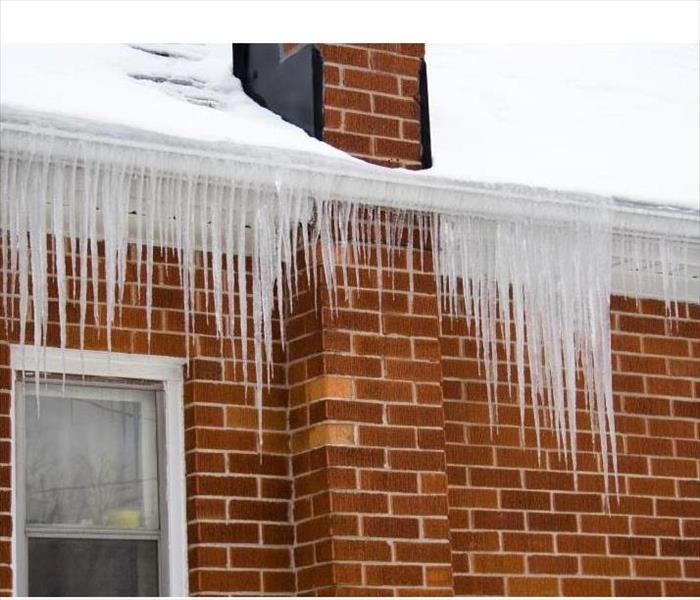 Surviving the Polar Vortex
Surviving the Polar Vortex
What is The Polar Vortex and How Do I Prepare My Home For It?
Over the last few years, the term “Polar Vortex” has become one of the most popular buzzwords used when referring to the frigidly cold temperatures we experience during the winter months in many regions of the United States. But what most people don’t know is that the polar vortex isn’t a new phenomenon; it’s something that exists year-round, and which only occasionally impacts the severity of North America’s winter weather.
What Is the Polar Vortex?
The polar vortex is an area of low pressure and circulating cold air that exists year-round at the Earth’s poles. During winter months in the Northern Hemisphere, the vortex in the North Pole can expand and send that cold air down the jet stream, all the way to our front doors here in the U.S. Although the polar vortex is too high in the atmosphere to be associated with any kind of large-snowfall-producing storm system, it can sometimes be the source of the bitter cold we feel coming from the Arctic regions.
So, other than making the walk to our mailboxes unbearable, how does this cold air affect us and our homes? Well, subzero temperatures can cause problems such as ice dams and frozen pipes that, if not attended to, can cause some serious damage to your home.
Ice Dams
Ice dams are ridges of ice that form on the edge of your roof and prevent melting snow from draining off your house. These dams often result in the melted snow leaking into the house, causing water damage to your home’s interior. Some things you can do to prevent ice dams from forming are: removing the snow off your roof (for example, with a roof rake) and/or increasing the insulation in your ceiling or attic. For more detailed information about ice dams and how to prevent them,
Freezing Pipes
Another damaging consequence of frigid temperatures is freezing pipes. Water that freezes in your pipes exerts so much pressure that it can actually cause a pipe to burst! Some helpful tips to prevent this from happening in your home are:
- Properly insulate all your accessible pipes with pipe insulation.
- Before the winter months, seal all cracks, holes, and other openings on exterior walls to prevent cold air from getting in.
- Disconnect all your hoses and install insulating covers over the host bibs.
- When cold air is predicted, let all your faucets drip to prevent the water from freezing inside.
- If freezing does occur, this will prevent pressure build up as well.
- Install a water leak protection system in your home to alert you when a leak is detected. These can be found at a plumbing supply store.
- Before leaving your home unoccupied for an extended period of time, shut off your water supply and drain your water system.
- Complete regular maintenance of your furnace and monitor the temperature of your home when you are away. Some examples of how you can monitor your home temperature include:
- Install a smart thermostat that allows you to monitor the internal temperature of your home remotely.
- Hire a service to install heat sensors and provide monitoring service that will alert you if the temperature drops below the desired level.
- Have a friend, neighbor, or family member check on your home while you are away.
By taking steps to prevent and treat ice dams and freezing pipes, you’ll ultimately help prevent the more inconvenient and expensive problems that a polar vortex brings.
Sources:
INSURANCE INSTITUTE FOR BUSINESS & HOME SAFETY
Property Casualty 360 A National Underwriter Company
National Preparedness Month is officially here!
8/31/2018 (Permalink)
 September Is National Preparedness Month: What Are You Doing To Be Prepared?
September Is National Preparedness Month: What Are You Doing To Be Prepared?
September Is National Preparedness Month: What Are You Doing To Be Prepared?
National Preparedness Month
National Preparedness Month (NPM), recognized each September, provides an opportunity to remind us that we all must prepare ourselves and our families now and throughout the year. This NPM will focus on planning, with an overarching theme: Disasters Happen. Prepare Now. Learn How.
Take time to learn lifesaving skills − such as CPR and first aid, check your insurance policies and coverage for the hazards you may face, such as flood, earthquakes, and tornadoes. Make sure to consider the costs associated with disasters and save for an emergency. Also, know how to take practical safety steps like shutting off water and gas.
The devastating hurricanes and wildfires of 2017 reminded the nation of the importance of preparing for disasters. Often, we will be the first ones in our communities to take action after a disaster strikes and before first responders arrive, so it is important to prepare in advance to help yourself and your community.
2018 Weekly Themes
- Week 1: Sept 1-8 Make and Practice Your Plan
- Week 2: Sept 9-15* Learn Life Saving Skills
- Week 3: Sept 16-22 Check Your Insurance Coverage
- Week 4: Sept 23-29 Save For an Emergency
- September 15 is a National Day of Action
Hashtags
- #PrepareNow
- #FloodSmart
- #NatlPrep
Graphics, Videos, and Related links
Check out tips and ideas to promote preparedness. For more engaging messages, attach appropriately sized graphics for specific social media platforms (e.g. Twitter, Facebook) and add emoji’s.
Social Media Content
Week 1: September 1-8- Make and Practice Your Plan
Web Resources
Social Media Content
- Disasters don’t plan ahead. You can. Make an emergency plan today & practice it: www.ready.gov/plan#PrepareNow #NatlPrep
- Preparing your family for an emergency is as simple as a conversation over dinner. Get started with tips from www.ready.gov #PrepareNow #NatlPrep
- Does your family have a fire escape plan? Make one today & practice two ways out of every room. #PrepareNow #NatlPrep
- Practice your fire escape plan by having a home fire drill at least twice a year with everyone in the home. #PrepareNow #NatlPrep
- Download a group texting app so your entire crew can keep in touch before, during & after an emergency. #NatlPrep #PrepareNow
- Practice evacuating in the car with your animals, so they’re more comfortable if you need to evacuate in an emergency. #NatlPrep #PrepareNow
- Disasters don't plan ahead, but you can #PrepareNow. Get the @fema app with weather alerts for up to 5 locations: www.fema.gov/mobile-app #NatlPrep
- Sign up for local emergency alerts in your area by searching online. #NatlPrep
- Contact your water and power companies to get on a “priority reconnection service” list of power-dependent customers if you rely on electrical medical equipment. #PrepareNow
- #PrepareNow. Find out if laws in your state permit pharmacists to dispense a 30-day refill of medications in an emergency.
Week 2: September 9-15-Learn Life Saving Skills
Web Resources
- Know basic home maintenance to protect your family and home. Learn how to mitigate your home against flood damage, or protect against the impacts of earthquakes.
- Learn how to turn off utilities like natural gas in your home.
- Put smoke alarms on every level of your home, test them monthly, and replace them when they are 10 years old.
- Know the ways to keep your home safe from cooking, heating & electrical fires.
- On National Day of Action, Saturday, September, 15, hold a preparedness event. Some examples of events might be hosting a CPR class or Community Emergency Response Team (CERT) training at your business, school, or house of worship; or volunteering with a local disaster response or recovery agency.
Social Media Content
- Keep your family safe. Install natural gas detectors throughout your house.#PrepareNow #NatlPrep
- Commit to learning and sharing life-saving emergency skills with the #UntilHelpArrives training http://go.usa.gov/x5Xcm #PrepareNow
- What’s deadly, colorless, and odorless? Carbon monoxide. Protect your family by installing a carbon monoxide detector. #PrepareNow #NatlPrep
- Do you know how to turn off the gas in your home? Learn how to in case you ever have a gas emergency in your home. #NatlPrep
- Be prepared for a power outage by having enough food, water, & meds to last for at least 72 hours: www.ready.gov/kit #PrepareNow
- Whether you need batteries for your remote or flashlight, always make sure you have spare batteries handy in an emergency: www.ready.gov/kit #PrepareNow #NatlPrep
- Never use candles for emergency lighting. Use flashlights and stock up on extra batteries. #PrepareNow #NatlPrep
- Do you have emergency supplies? Get ahead of the next storm or wildfire by making sure you’re ready in case you are asked to leave your home: www.ready.gov/kit #PrepareNow
- Replace all home smoke alarms when they are 10 years old. #PrepareNow #NatlPrep
- Put smoke alarms on every level of your home and test them monthly. #PrepareNow #NatlPrep
- Keep anything that can catch fire away from your stovetop. #PrepareNow #NatlPrep
- Keep anything that can burn at least 3 feet from your furnace, water heater, and other heat-generating equipment. #PrepareNow #NatlPrep
- Have chimneys and vents cleaned and inspected by a qualified professional at least once a year to prevent home fires. #PrepareNow #NatlPrep
- Practice how to “Drop down onto your hands and knees. Cover your head and neck with your arms. Hold on to any sturdy covering until the shaking stops. More info at www.ready.gov/earthquake#PrepareNow
- Do you know what to do when an emergency happens? Learn actions to save a life #UntilHelpArrives: https://community.fema.gov/until-help-arrives #PrepareNow
- Giving CPR to a person struck by lightning can save their life. Learn how to perform Hands-Only and how to use an AED to prepare for a health emergency. #PrepareNow
Week 3: Sept 16-22-Check Your Insurance Coverage
Web Resources
- Insurance is the first line of defense; check your insurance coverage and review the Document and Insure Property guide.
- Flood Insurance allows communities and families to recover more quickly and more fully. Visit Floodsmart.gov to learn more about flood insurance and how to protect your home or business.
Insured Survivor Video Testimonials
- US Army Sgt. Boggs almost lost everything during Hurricane #Irma. Flood insurance gave him the financial protection he needed after the storm. Learn more: https://www.youtube.com/watch?v=PrEP2H_Lnf0 #FloodSmart #NatlPrep
- Jeff’s daughter was just one week old when Hurricane #Harvey hit. Flood insurance helped his young family get back in their home and back to their life. https://www.youtube.com/watch?v=VTB30uqgPNo#FloodSmart #NatlPrep
- “Having flood insurance meant having one thing less to worry about.” Rupi Prasad lost almost everything in Hurricane #Harvey. Flood insurance is helping her get back to her home and get back to retirement. https://www.youtube.com/watch?v=rmE4GQkfd0w #NatlPrep
- With flood insurance, John and Michelle Tipton are rebuilding their home safer and stronger after Hurricane Matthew. Flood insurance is worth the investment. https://www.youtube.com/watch?v=rmE4GQkfd0w #FloodSmart #NatlPrep
Social Media Content
- Flooding can be an emotionally and financially devastating event. Just one inch of water can cause $25,000 in damage to your home. #PrepareNow #Floodsmart
- Approximately 80% of households impacted by Hurricane Harvey last year did not have flood insurance. Don’t become a statistic. Learn more about your flood risk: www.floodsmart.gov #NatlPrep #FloodSmart
- Most homeowners’ and renters’ insurance does not cover flood damage. Learn more about flood insurance at www.floodsmart.gov #PrepareNow #FloodSmart
- #PrepareNow. Snap photos of important documents and personal belongings to help you quickly file a claim after a flood: https://youtu.be/i3MfRpND5gk #NatlPrep
- Hurricanes bring heavy rains that may cause flooding. Think about buying flood insurance before the storm. www.floodsmart.gov #NatlPrep #FloodSmart
- Floods are the most common and costly natural disaster in the U.S. Are you protected? Check your insurance policy today #NatlPrep #FloodSmart
- 30 Days: The number of days it takes for most flood insurance policies to go into effect. Don’t wait until it’s too late! www.floodsmart.gov #PrepareNow #FloodSmart
- Anywhere it rains, it can flood. Learn more about how flood insurance can help protect the life you’ve built. #NatlPrep #FloodSmart
- Find out if you live in a flood prone area and how flood insurance can lessen the cost to your family by visiting: www.floodsmart.gov. #NatlPrep #FloodSmart
- At least 25% of small businesses never reopen following a disaster. Purchase flood insurance to protect your business. #NatlPrep #FloodSmart
Week 4: Sept 23-30-Save For an Emergency
Web Resources
Social Media Content
- What important documents should you have for an emergency? The Emergency Financial First Aid Kit explains them all: https://go.usa.gov/xNhp6 #PrepareNow
- How will you pay your bills if a disaster strikes? Disasters don’t plan ahead, #PrepareNow: www.ready.gov/financial-preparedness #NatlPrep
- Over 40 percent of all Americans don’t have $400 in savings according to the Federal Reserve. What will you do if there is a disaster? Learn how you become more prepared:www.ready.gov/financial-prepaaredness #PrepareNow
- Keep some cash on hand in case of emergencies. #NatlPrep
- You will have expenses like lodging, food, and gas, after a disaster. Are you prepared? #PrepareNow www.ready.gov/financial-preparedness #NatlPrep
- Are you prepared for a flood? Floods are the nation’s most common and costly natural disaster, causing billions of dollars in damage each year. #PrepareNow. Get tips: www.floodsmart.gov #FloodSmart
- The Emergency Financial First Aid Kit is a tool to help you and your family collect and secure the documents you would need if there was a disaster. www.ready.gov/financial-preparedness#PrepareNow #NatlPrep
- Set aside a small amount from each paycheck to go into your savings account.Find more tips to help you manage your money to be prepared for the unexpected: https://www.usa.gov/flec #NatlPrep
- Only about half of all Americans have an emergency fund. This gives them the money needed to help with increased expenses after a disaster. Get tips about creating a fund: https://www.usa.gov/flec#PrepareNow
- Do you know the help your community provides if there is a disaster? Search online today. #NatlPrep #PrepareNow
- Make digital copies of important documents and save them on the cloud or a secure cell phone app in case disaster strikes. #NatlPrep
- Flooding can be an emotionally and financially devastating event. Just one inch of water can cause $25,000 in damage to your home. To learn more visit www.FloodSmart.gov #FloodSmart #PrepareNow
Insurance tips for storm damage
6/15/2018 (Permalink)
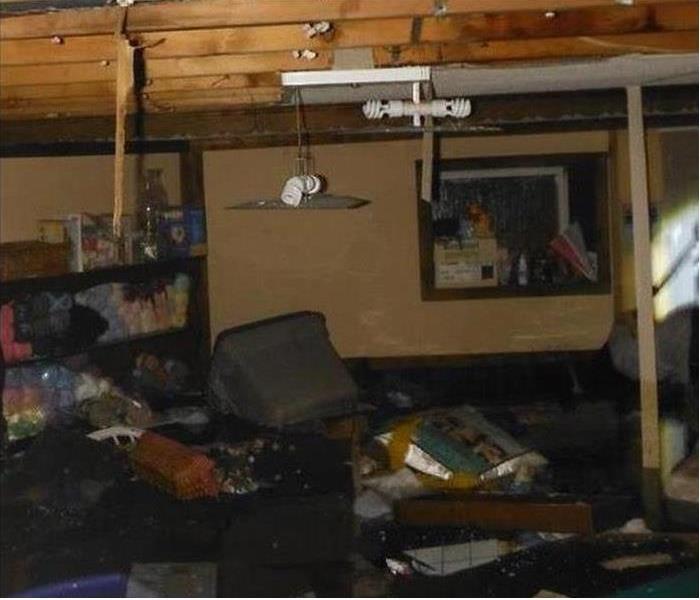 Insurance tips for storm damage
Insurance tips for storm damage
If your home or business has experienced storm damage and you are unsure on how to actually seek help in this sort of process or you are unsure if you are even covered for such loss, please remain calm. We understand this process may be frightening at first, but there are several professionals that can and will assist you during this process. If you need immediate help, please contact SERVPRO of Southern McHenry County, by calling 847-516-1600. We are willing to help you through this process, but for general tips and best practices, please follow the outline below provided by United Policy Holders and what they tell their clients during the process of storm aftermath.
What to do before and during a severe storm:
- If you live on or at the foot of a hillside, place sandbags around the perimeter of your home.
- Place rolled up towels along the inside of exterior doors to prevent water from getting in.
- Do your best to keep your gutters clear but stay safe throughout the storm.
- Move valuables and items up from lower levels and away from doors and windows.
- Find a copy of your insurance policy. Check the wording on water damage and the amount of your deductible
- Use the free UPHelp Home Inventory App to photo document key features of your home that could be damaged (windows, siding, roof and interior) and your possessions.
What to do after the storm:
- If your home was damaged, focus on creating a scope of everything that was damaged and what it will cost to repair or replace.
- To keep a clean record and avoid premium increases, don't file a claim until you review your policy and you think your loss will exceed your deductible and be covered. Read: To claim or not to claim...
- If the damage was sudden and accidental and triggered by the storm, don't accept a claim denial argument from your insurer or agent that it was due to faulty construction or maintenance. The insurer cashed your premium checks and insured your property "as is".
- If you file a claim and your insurer rejects it, make sure you get a clear and detailed explanation of their position. Read: www.uphelp.org/speakUP. Claim and coverage disputes are rarely as clear cut as your insurer makes them out to be.
- The answer to whether your town or city will pay to repair flooding damage to your home is..."it depends."
Source: (http://www.uphelp.org/pubs/insurance-tips-storm-damage)
United Policy Holders
Prepare for Spring Storms
6/10/2018 (Permalink)
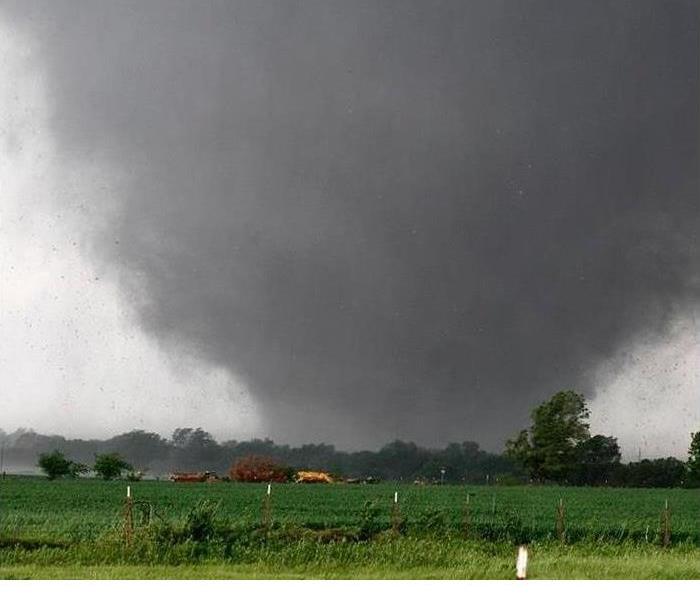 Tornadoes can occur during spring storms.
Tornadoes can occur during spring storms.
Tornadoes can occur during spring storms.
Spring is the time of year when many things change—including the weather. Temperatures can swing back and forth between balmy and frigid. Sunny days may be followed by a week of stormy weather. Sometimes extreme weather changes can occur even within the same day.
Thunderstorms cause most of the severe spring weather. They can bring lightning, tornadoes, and flooding. Whenever warm, moist air collides with cool, dry air, thunderstorms can occur. For much of the world, this happens in spring and summer.
Because spring weather is so unpredictable, you may be unprepared when severe weather hits—particularly if you live in a region that does not often experience thunderstorms, tornadoes, or flooding. And when severe weather hits unexpectedly, the risk of injury and death increases. So planning ahead makes sense; prepare for storms, floods, and tornadoes as if you know in advance they are coming, because in the spring, they very likely will.
Advance planning for thunderstorms, lightning, tornadoes, and floods requires specific safety precautions.
Keep an emergency kit on hand. Some items to include are:
- A battery-operated flashlight, a battery-operated NOAA Weather Radio, and extra batteries for both
- An emergency evacuation or shelter plan, including a map of your home and, for every type of severe weather emergency, routes to safety from each room
- A list of important personal information, including:
- telephone numbers of neighbors, family, and friends
- insurance and property information
- telephone numbers of utility companies
- medical information
- According to the American Red Cross a first aid kit may include:
- non-latex gloves
- assortment of adhesive bandages
- antibiotic ointment
- sterile gauze pads in assorted sizes
- absorbent compress dressings
- tweezers
- scissors
- adhesive cloth tape
- aspirin packets (81 mg each)
- first aid instruction booklet
(NOTE: Customize your first aid kit to meet your individual and family needs.)
- A 3–5 day supply of bottled water and nonperishable food
- Personal hygiene items
- Blankets or sleeping bags
- An emergency kit[1.08 MB] in your car
Sources:
NOAA
American Red Cross
CDC
Emergency Survival Kit
4/1/2018 (Permalink)
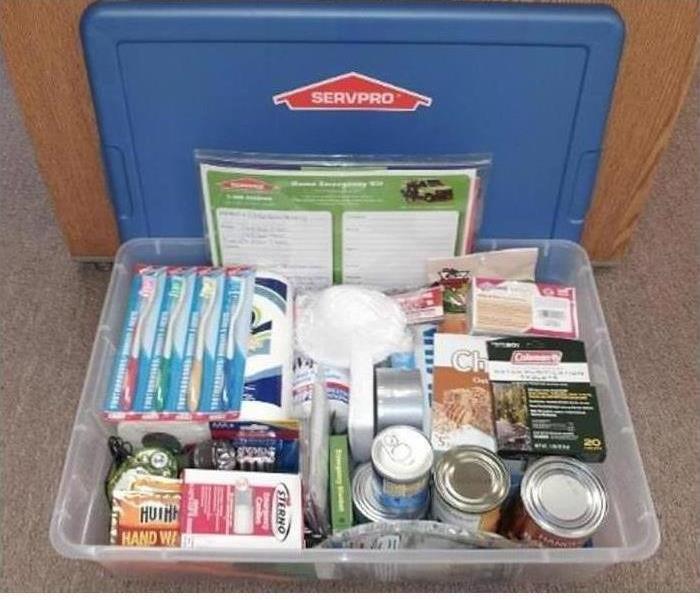 SERVPRO survival kits in preparation for spring.
SERVPRO survival kits in preparation for spring.
With spring approaching, Illinois weather can be extreme. Between major thunderstorms and wind storms it's important to have an emergency survival kit ready for when the power does go out! These kits can also be stored in cars, for when that thunderstorm or tornado approaches and requires you to take cover.
Keep in mind, doubling up on essentials like flashlights and radios is a smart move in case something malfunctions.
- Clean water is a great start
- Blankets, Sleeping Bag
- Additional clothes
- Non-perishable food that can be eaten warmed up or cold (if you pack anything that's perishable, make sure to regularly cycle it through to keep it fresh)
- 1-2 Flashlights with extra batteries
- Matches and small candles. Check to make sure there is a metal or some sort of containment for the wax!
- Any necessary medicines (check expiration dates).
- Medical supplies such as band-aides, gauze, Neosporin and rubbing alcohol.
- Lightweight tent
- Personal hygiene items
- Paper goods (napkins, plates, paper towels)
- Manual can opener
- AM/FM radio.
There's always more a person can add to their survival kit. This is a great starting point. If you do lose power during a thunderstorm, tornado, high winds or other damage can occur throughout your home. If that is the case, keep SERVPRO of Southern McHenry County in mind to help you through!
How to be ready for a thunderstorm
3/1/2018 (Permalink)
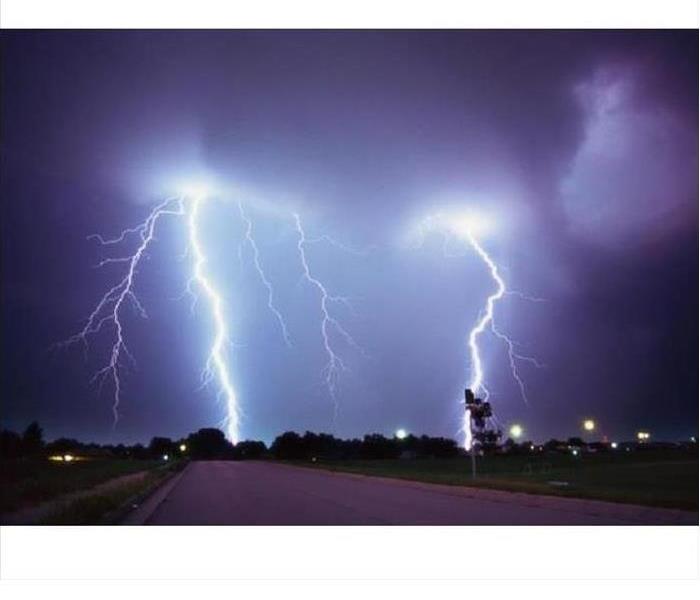 Approaching lightingstorm
Approaching lightingstorm
How to be ready for a thunderstorm
The American Red Cross created a great outline of how to prepare for severe thunderstorms. In the case of an emergency it always helps to be prepared.
- Learn about your local community’s emergency warning system for severe thunderstorms
- Discuss thunderstorm safety and lightning safety with all members of your household
- Pick a safe place in your home for household members to gather during a thunderstorm This should be away from windows, skylights and glass doors that could be broken by strong winds or hail
- Make a list of items to bring inside in the event of a severe thunderstorm
- Make trees and shrubbery more wind resistant by keeping them trimmed and removing damaged branches
- Protect your animals by ensuring that any outside buildings that house them are protected in the same way as your home
- Consult your local fire department if you are considering installing lightning rods
- Get trained in first aid and learn how to respond to emergencies
- Put together an emergency preparedness kit
- Review the Be Red Cross Ready - Thunderstorm Safety Checklist
Please contact SERVPRO of Southern McHenry County if you have any questions or need emergency service at 847-516-1600.
-Source: American Red Cross
To Claim or Not to Claim: THAT is the Question!
2/1/2018 (Permalink)
When faced with a water damage situation, either at home or commercially, one of the first questions to ask yourself is “Should I file a claim?” There are a number of reasons why this is an important factor to consider once you have the mitigation (cleanup) portion under control.
Of course, the first step with any water loss is to get help immediately to stop the source of the leak, BEFORE you mitigate the loss (get it cleaned up)!
By not acting fast, secondary damage can result in mold issues which may or may not be covered by your insurance policy. In Illinois, there are restrictions as to how much coverage will be offered for mold remediation. So regardless as to whether or not you decide to file a claim, it’s still of vital importance that you act fast. In fact, your insurance company might even try to use your lack of action against you and try to deny the claim because you waited too long & inadvertently caused more damage than otherwise would have been the case. So always pick up the phone and call a team like SERVPRO of Southern McHenry County right away.
Once the leak is stopped, it’s time to mitigate the loss and then evaluate the situation to determine if it’s actually worth it to file a claim with your insurance carrier. In many cases, smaller water damage losses can and should be paid out of pocket to save you money in the long run. Unless it’s very obvious that the claim is going to be a huge bill due to extensive damage, always take the time to weigh the pros & cons before you commit to filing a claim.
Don’t worry about having the work done before you call your carrier—they were going to tell you to get the work done ASAP anyway, and it’s YOUR CHOICE as the insured as to which vendor you choose to do the work.
First, request an estimate from the mitigation team—they should be able to give you some kind of ballpark dollar amount which you can use to weigh against your deductible as well as your total annual premium cost. Then, you’ll want to consider how much your premium cost stands to rise based on this new claim—you’ll want to contact your insurance agent who sold you the policy to discuss this with him/her. (Don’t bother trying to discuss this with an insurance adjuster, because they won’t be able to discuss premium rates with you).
In a nutshell, you need to try & calculate the cost for the loss to be cleaned up and repaired, versus your deductible and current/projected insurance premium. If it’s going to cost you less in the long run to just pay out of pocket, you’re better off not filing a claim. This is where the conversation with your agent comes into play—they can tell you how much your rates could be affected if you file a claim and show you on paper just how much money you stand to save over the course of time. This is largely dependent on the magnitude of the loss—if it’s obviously a huge water loss with extensive damage to the property, then filing a claim is the obvious choice. It’s the smaller incidents that might not prove worthy of filing a claim, because in the long run you might end up paying more in increased premiums than if you had just paid for the mitigation & repairs yourself. You’d be surprised how many people don’t stop for a moment & consider all these factors before picking up the phone and filing a claim.
Water damage losses, particularly in Illinois, are the most common type of claim filed by homeowners. They can get quite expensive depending on the severity of the loss. Insurance carriers have reacted to this trend by implementing new policies & lobbying for new laws by which YOU as the insured, carry a higher burden than you might expect: the claim can not only raise your rates for as long as you own the property, but depending on the insurance company, the claim could follow you even if/when you sell the property and buy a different property. Yes, you read that correctly: your premiums might be affected by a water loss at a different property than the one at which you filed the claim. A simple analogy would be that it can be much like getting a speeding ticket: the ticket affects your car insurance rates, and selling your car & buying a different one won’t make that speeding ticket go away. THIS is why it’s so important to take a moment to consider the long-term effects vs. the short-term gain. Ask yourself: “Should I file a claim?”
REMEMBER: regardless of whether or not you file a claim, keep in mind that you’re still going to have to get the work done by a professional reputable water mitigation team. SERVPRO of Southern McHenry County is available 24/7 to respond to your needs.
We hope this helps. We offer services ranging from water damage mitigation to mold remediation to fire/smoke damage. If you have any questions, comments, concerns, or are in need of immediate assistance at your home or place of business, call SERVPRO of Southern McHenry County at 847-516-1600—we’ll be happy to assist.
Resolve to be "READY" in 2018
12/3/2017 (Permalink)
With New Year’s Eve rapidly approaching, now is the perfect time to think of resolutions. While resolutions typically involve committing to personal changes and reaching goals, the single most important resolution that both business and homeowners can make for 2018 is to “Resolve to be Ready.”
Preparing in advance to deal with the unexpected can make a world of difference in how quickly and completely property owners can put the pieces of their lives back together. Emergency readiness plans are the foundation for effective and timely emergency response.
We would like to encourage all property owners, commercial or residential, to take advantage of the no-cost emergency planning tools available from FEMA, as well as SERVPRO’s Emergency READY Profile and READY Plan Mobile App.
For homeowners:
- FEMA resources include guidelines for creating a Family Emergency Plan and Emergency Supply List, with additional tips for pet owners, seniors, people with disabilities, and even commuters.
- SERVPRO of Southern McHenry County offers their free SERVPRO READY Plan App, which stores critical contact and property information electronically in advance, where it can be accessed with a mobile device in seconds if disaster strikes.
For business owners:
- FEMA offers materials on topics ranging from creating a Business Continuity Plan to an Insurance Discussion Coverage Form in addition to guidelines for creating an Emergency Response Plan.
- SERVPRO of Southern McHenry County offers a no-cost facility assessment and assistance in creating a comprehensive Emergency READY Profile®(ERP). The ERP includes information about emergency contact numbers, priority and high/risk areas, shut-off valve locations and more that can be stored in the READY app.
The time to gather and store information like emergency contact numbers; insurance contacts; and location of shut-offs, fire suppression system controls, and such is before an emergency strikes, not during an emergency. Having this information at your fingertips can help emergency responders react as quickly and effectively as possible, helping to limit loss of property and even lives.
SERVPRO of Southern McHenry County specializes in disaster restoration, cleanup repair services, helping to remediate damage, making it “Like it never even happened,” for both commercial and residential customers. For more information on SERVPRO of Southern McHenry County the SERVPRO mobile app and the SERVPRO Emergency READY Program, please contact your local SERVPRO Restoration Consultants at 847-516-1600 or SP8666@sbcglobal.net.
Preparing for Winter Storms
11/1/2017 (Permalink)
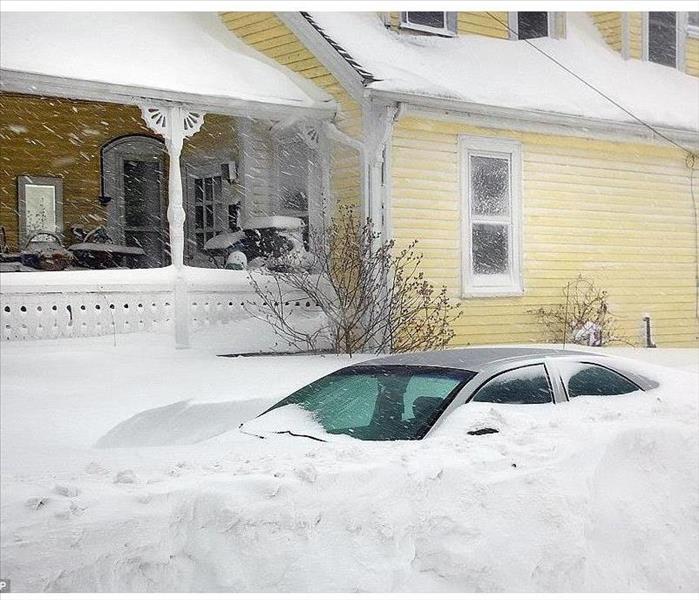 Take some time this fall to check your home before the cold winter and snow comes!
Take some time this fall to check your home before the cold winter and snow comes!
More often than not, as homeowners, the last thing we want to do is home repairs. Not only do they take time (and many of us don't have a lot to spare), but they can also be costly and sometimes tedious. Small repairs such as changing a light bulb or fixing a leaky faucet can be put off until it is absolutely necessary to fix, but there are some repairs that should never be put off. Unfortunately, many of these involve major things (and can come with an even more major price tag), but avoiding the two repairs listed below could actually cause bigger problems down the road when the cold freezing temperatures and snow hit us shortly.
Foundation Issues
The foundation of your home is extremely important-it holds up your home's entire structure. Cracks in the foundation are definitely something not to overlook when it comes to repairs. The last thing you want as a homeowner is for a crack to spread. Checking your home's foundation in the fall will help prevent water from thawing snow or ice getting into your home in the spring.
Plumbing Issues
Water anywhere other than in a pipe or sink basin is bad, especially for your home. Plumbing issues and leaks anywhere in your property should be addressed as soon as possible. Winter in the Chicago area is known for its below freezing temperatures. This can sometimes take a toll on the plumbing and pipes in your home. Checking them now will be a great step towards prevention.
Roof Issues
Every home has a roof. This is one of the most important parts of any building because it protects what is inside. The roof is a major player when it comes to keeping up on repairs. If you notice any leaks, missing or damaged shingles/tiles or any kind of sagging this should be fixed as soon as possible. Leaks mean water will get into your home and then may lead to mold, structure damage and even possibly fire if it comes in contact with anything electrical. Missing or damaged shingles can lead to a number of issues if not fixed and create weak spots in a roof. A sagging roof could signify moisture in the attic and could be a sign of poor ventilation, broken or cracked joists, rafters or the ridge line itself.
Fireplace Issues
Fireplaces and other indoor heating systems with poor maintenance can cause fire, puff-backs and smoke damage. A fireplace is beautiful and keeps your home warm with low electricity bills but without proper care it can cause a house fire. Clean chimneys and flutes on your fireplaces annually. Get your furnaces checked once a year and keep your space heaters 3 feet or the recommended length away from any flammable objects. This includes window blinds/curtains, furniture, bedding, and decorative rugs.
Hurricane Harvey
9/1/2017 (Permalink)
Hurricane Harvey
Here to Help®
In addition to the 121 local Franchises that are in the states affected by Hurricane Harvey, SERVPRO has a national network of over 1,700 Franchises across the country and our designated Disaster Recovery Teams have been deployed to the affected areas bringing hundreds of crews from across the nation to help.
Harvey made landfall late Friday night as a Major Hurricane at Category 4 strength. Impacts for Harvey are widespread and will continue for the next week at the very least, and our local SERVPRO Franchises and Disaster Recovery Teams are ready to respond to calls.
You Can Help By Making a Donation Today!
The American Red Cross is working around the clock along the Gulf Coast to help the thousands of people whose lives have been devastated by Tropical Storm Harvey.
Click HERE to make a donation
Floods and FEMA
8/23/2017 (Permalink)
 FLOOD LOSSES and FEMA
FLOOD LOSSES and FEMA
I know we have got past of the worst of the flood season, but with all the talk of earthquakes, I thought this could be helpful.
Catastrophe situations typically involve numerous flood claims, making for brisk business for restoration companies like SERVPRO of Southern McHenry County. When a property owner states they have insurance, it would be wise to clarify if it is going to be a standard property claim, or insurance through the National Flood Insurance Program (NFIP). It is important to keep in mind that flood claims have to follow the rules of the Standard Flood Insurance Policy (SFIP) and there are some fairly significant differences from a standard homeowner’s policy.
Knowing the flood program rules can keep restorers like SERVPRO of Southern McHenry County from getting into hot water after a flood claim, especially if you are referred in by an agent. Nothing upsets a client or referring partner more than surprise charges the property owner must pay when, from the onset, everyone might have assumed it would be covered by the policy. While restorers like SERVPRO of Southern McHenry County know exactly what is required to be done to restore the property to pre loss condition, it is imperative that they know these standard procedures are not always covered by the SFIP -- which the flood adjuster must adhere to. There is no wiggle room when it comes to the SFIP, and it is important that the insured read their policy and coverage and make sure they understand the coverage and limitations, or contact their agent. When a restoration professional knows the rules, life becomes easier for all involved.
FEMA produced a lengthy memo outlining what is allowed and what is not when it comes to restoration expenses after a flood loss. The memo is titled W-13025a and a quick web search will produce it. With this in mind, the following list represents a portion of some of the major points every restorer must know before beginning work on a flood claim using an SFIP policy. Refer to the memo for a full listing.
- Water extraction from wet carpet is not covered by the SFIP. If your estimate lists water extraction as a line item, it will not be allowed for coverage. It is assumed the extraction cost is included in the cost to remove wet carpet, so restorers must include that cost in the removal line item.
- Restorers must provide complete daily drying logs with their invoice. This includes readings of affected and non-affected areas, equipment outputs, and material readings, documenting the drying process. Without proper drying logs, flood adjusters are only able to pay the reasonable costs that should have been incurred via calculations provided by FEMA.
- The SFIP will not pay for claims to dry building components that are typically removed as flood water is considered category three. The removal of carpet and drywall affected by flooding is a typical example. All wet materials must be removed prior to installing drying equipment or the equipment charges will not be allowed.
Warning Systems – Wireless & Siren Alerts
8/16/2017 (Permalink)
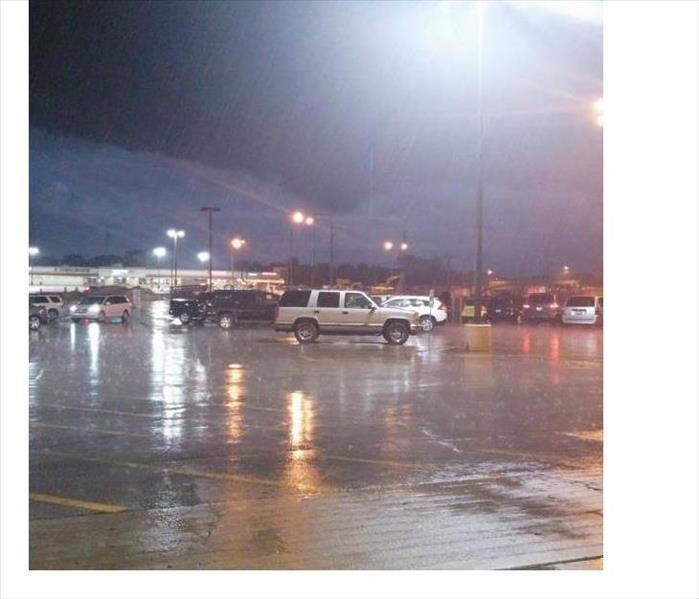 Tornado in McHenry County
Tornado in McHenry County
The Emergency Alert System (EAS) is a national public warning system that requires broadcasters, cable television systems, wireless cable systems, satellite digital audio radio service (SDARS) providers, and direct broadcast satellite (DBS) providers to provide the communications capability to the President to address the American public during a national emergency. The system also may be used by state and local authorities to deliver important emergency information, such as AMBER alerts and weather information targeted to specific areas.
Tornado Sirens
What should I do when I hear the sirens?
When you hear tornado sirens, go inside and tune to local media to get more information.
Why can’t I hear the sirens in my house?
Sirens are an outdoor warning system designed only to alert those who are outside that something dangerous is approaching.
How can I get alerts when I’m at work or in my house?
For alerts indoors, every home and business should have a NOAA Weather Radio All-Hazards. NOAA Weather Radio is like a smoke detector for severe weather, and it can wake you up when a warning is issued for your area so you can take appropriate action.
When are sirens tested?
Sirens are tested according to local community policies. This policy in the Chicagoland area is the system is tested every Tuesday at 10am.
Why don’t the outdoor warning sirens sound an all-clear signal?
People should be indoors and monitoring local media for updates on the storm.
Will the sirens warn me of every dangerous storm?
The safest approach is to be proactive and use all of the information available to protect yourself and your family from threatening weather. Nothing can replace common sense. If a storm is approaching, the lightning alone is a threat. Sirens are only one part of a warning system that includes preparation, NOAA Weather Radio, and local media.
Who activates the sirens?
Sirens are typically activated by city or county officials, usually a police or fire department or emergency management personnel. Check with your city or county officials to learn more.
Wireless Emergency Alerts
During an emergency, alert and warning officials need to provide the public with life-saving information quickly. Wireless Emergency Alerts (WEAs), made available through the Integrated Public Alert and Warning System (IPAWS) infrastructure, are just one of the ways public safety officials can quickly and effectively alert and warn the public about serious emergencies.
What you need to know about WEAs:
- WEAs can be sent by state and local public safety officials, the National Weather Service, the National Center for Missing and Exploited Children, and the President of the United States
- WEAs can be issued for three alert categories – imminent threat, AMBER, and presidential
- WEAs look like text messages, but are designed to get your attention and alert you with a unique sound and vibration, both repeated twice
- WEAs are no more than 90 characters, and will include the type and time of the alert, any action you should take, as well as the agency issuing the alert
- WEAs are not affected by network congestion and will not disrupt texts, calls, or data sessions that are in progress
- Mobile users are not charged for receiving WEAs and there is no need to subscribe
- To ensure your device is WEA-capable, check with your service provider
NOAA All-Weather Radio
If you don’t have a NOAA Weather Radio, there are other methods for receiving forecasts, watches and warnings from the National Weather Service. Tune in to your local radio and television stations for the latest news and updates on the situation, and visit weather.gov for information about weather radios and other online services.
All individuals living or working in tornado-prone areas should have a weather radio inside their home or place of work. A weather radio is particularly important for those living in an area that does not have storm warning sirens. All-weather radios broadcast National Weather Service warnings, watches, forecasts, and other hazard information 24 hours a day, and post-event information for all types of hazards, both natural and technological.
NOAA Weather Radios are available at electronics stores across the country and range in cost from $25 to $100 or more, depending on the quality of the receiver and number of features. The NWS does not endorse any particular make or model of receiver.
What to Look for in a NOAA Weather Radio
- The most desirable feature is an alarm tone. This allows you to have the radio turned on but silent, listening for a special tone that is broadcast before watch and warning messages that give immediate information about a life-threatening situation.
- Specific Area Message Encoding (SAME) technology, a feature available since the mid-1990s, is capable of providing detailed, area-specific information. Unlike other NOAA Weather Radios, the SAME feature will filter out alerts that do not affect your immediate area.
- It should operate on batteries during times when electrical service may be interrupted. Look for radios with an AC adapter and battery compartment.
- The radio should be tunable to all seven NWR frequencies. For the latest list of frequencies and transmitter locations, check the NOAA Weather Radio website.
- The hearing and visually impaired can receive watches and warnings by connecting weather radio alarms to other kinds of attention-getting devices, such as strobe lights, pagers, bed-shakers, personal computers, and text printers.
Please be safe during these times of possible disaster. If a disaster does occur call SERVPRO of Southern McHenry County at 847-516-1600.
source
https://www.fema.gov/integrated-public-alert-warning-system
www.weather.gov
http://www.nws.noaa.gov/nwr/info/nwrrcvr.html
http://www.nws.noaa.gov/nwr/
Be Storm Ready, Be Storm Smart!
8/13/2017 (Permalink)
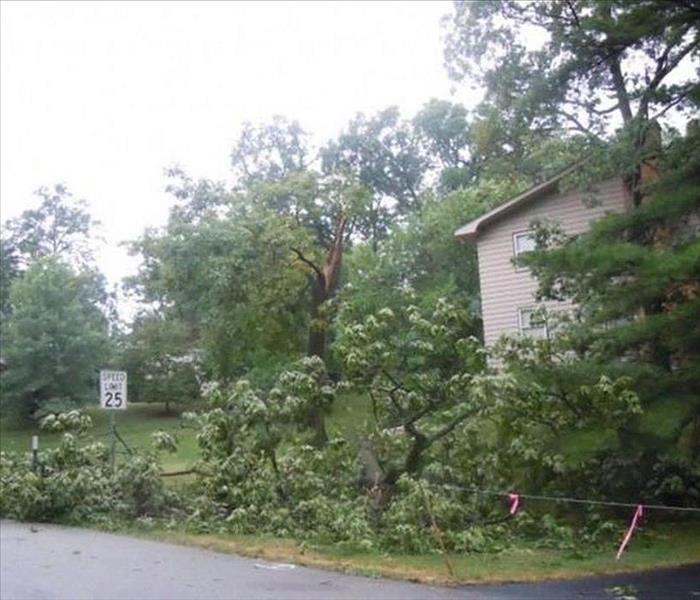 Down Trees From Storm Event
Down Trees From Storm Event
Severe weather can happen anytime, anywhere. Each year, Americans cope with an average of the following intense storms:
- 10,000 severe thunderstorms
- 5,000 floods or flash floods
- 1,000 tornadoes
- 2 land falling deadly hurricanes
Approximately 98 percent of all presidentially declared disasters are weather-related, leading to around 500 deaths per year and nearly $15 billion in damage. Knowing your risk of severe weather, taking action and being an example are just a few steps you can take to be better prepared to save your life and assist in saving the lives of others.
Know Your Risk. The first step to becoming weather-ready is to understand the type of hazardous weather that can affect where you live and work, and how the weather could impact you, your business and family. Check the weather forecast regularly, obtain a NOAA Weather Radio, and learn about Wireless Emergency Alerts. Severe weather comes in many forms and your shelter plan should include all types of local hazards.
Take Action. Take the next step in severe weather preparedness by creating a communications plan for your home and business. Put together or purchase an emergency kit. Keep important papers and valuables in a safe place.
Be an Example. Once you have taken action to prepare for severe weather, share your story with co-workers and family and friends on Facebook or Twitter. Your preparedness story will inspire others to do the same.
Build an Emergency Kit
- Water (one galloon per person per day)
- Food (non-perishable 3-day supply)
- Manual can opener
- Battery operated radio, preferably a NOAA Weather Radio
- Flashlight and extra batteries
- First aid kit
- Whistle to signal for help
- Clothing
- Dust makes or bandanas
- Plastic sheeting, garbage bags and duct tape
- Wrench or pliers to turn off utilities
- Hygiene items
- Important documents; copies of insurance policies, identification and bank account information
If you have any questions please contact SERVPRO of Southern McHenry County at 847-516-1600
Checking Your Home: Structural Elements
7/30/2017 (Permalink)
Checking Your Home: Structural Elements
From The American Red Cross
If you had to leave your home, return only when local authorities advise that it is safe to do so. Do not cut or walk past colored tape that was placed over doors or windows to mark damaged areas unless you have been told that it is safe to do so. If a building inspector has placed a color-coded sign on the home, do not enter it until you get more information, advice and instructions from your local authorities.
If you have children, leave them with a relative or friend while you conduct your first inspection of your home after the disaster. The site may be unsafe for children, and seeing the damage firsthand may upset them even more and cause long-term effects, including nightmares.
Make a careful and thorough inspection of your home’s structural elements:
- Check the outside of your home before you enter. Look for loose power lines, broken or damaged gas lines, foundation cracks, missing support beams or other damage. Damage on the outside can indicate a serious problem inside. Ask a building inspector or contractor to check the structure before you enter.
- If the door is jammed, don’t force it open – it may be providing support to the rest of your home. Find another way to get inside.
- Sniff for gas. If you detect natural or propane gas, or hear a hissing noise, leave the property immediately and get far away from it. Call the fire department after you reach safety.
- If you have a propane tank system, turn off all valves and contact a propane supplier to check the system out before you use it again.
- Beware of animals, such as rodents, snakes, spiders and insects, that may have entered your home. As you inspect your home, tap loudly and often on the floor with a stick to give notice that you are there.
- Damaged objects, such as furniture or stairs, may be unstable. Be very cautious when moving near them. Avoid holding, pushing or leaning against damaged building parts.
- Is your ceiling sagging? That means it got wet – which makes it heavy and dangerous. It will have to be replaced, so you can try to knock it down. Be careful: wear eye protection and a hard hat, use a long stick, and stand away from the damaged area. Poke holes in the ceiling starting from the outside of the bulge to let any water drain out slowly. Striking the center of the damaged area may cause the whole ceiling to collapse.
- Is the floor sagging? It could collapse under your weight, so don’t walk there! Small sections that are sagging can be bridged by thick plywood panels or thick, strong boards that extend at least 8–12 inches on each side of the sagging area.
- If the weather is dry, open windows and doors to ventilate and/or dry your home.
- If power is out, use a flashlight. Do not use any open flame, including candles, to inspect for damage or serve as alternate lighting.
- Make temporary repairs such as covering holes, bracing walls, and removing debris. Save all receipts.
- Take photographs of the damage. You may need these to substantiate insurance claims later.
Stay Safe from Summer Storms
7/30/2017 (Permalink)
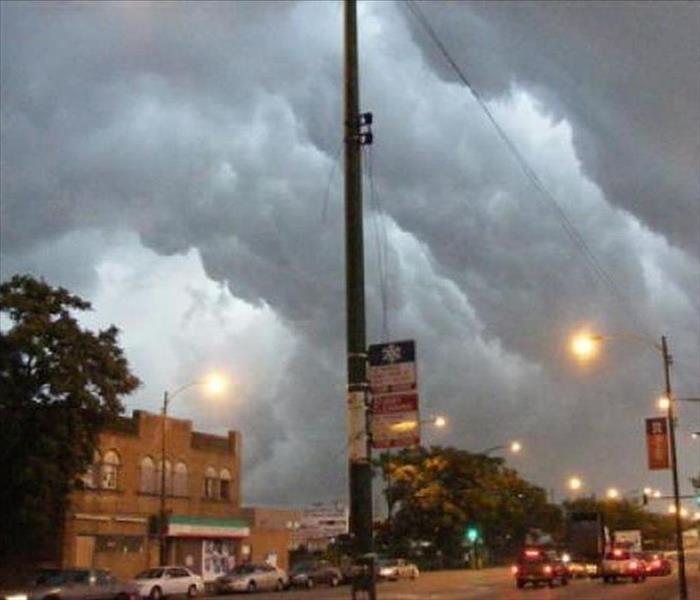 Thunderstorm Occurring
Thunderstorm Occurring
While the spring season is known for the potential to experience severe weather, the threat exists throughout the summer months as well. In fact, the potential for severe weather even increases in some areas. Thunderstorm season in the Midwest begins June 1st and runs through September 30th.
While it may be difficult to prepare for the unpredictable, there are steps you can take now to ensure you are ready when disaster strikes. Consider the following tips when preparing for an approaching storm.
SERVPRO of Southern McHenry County 847-516-1600
Before the Storm Build an emergency supply kit and develop a communication plan. Unplug your electrical devices like your computer, or television. Secure objects that could easily be blown away in a storm. When you see the storm coming don't watch the storm and all of its fury, find shelter inside or in your hard top vehicle (avoid convertibles).
During the Storm Use your battery operated NOAA Weather Radio for updates from your local officials, for more information on weather radios. Avoid contact with electrical equipment or cords, including corded telephones. Cordless and cellular devices should be safe. Unplug anything you don't want damaged as a result of the storm. Power surges from lightning can cause serious damage. While staying away from windows and doors, remember that plumbing fixtures can conduct electricity.
After the Storm Don’t ever drive through flooded roadways. Stay away from downed power lines, and storm damaged areas to keep from putting yourself in harm’s way. Report any downed power line to your electric supplier immediately.
sources
http://www.wikihow.com/Prepare-for-a-Winter-Storm
Flood Warnings What do they mean?
7/28/2017 (Permalink)
Lately there has been flooding all over the United States: if you are unfamiliar with the difference between a flash flood warning, flood warning, and flood advisory; then read below!
What is the difference between a Flood Watch and a Flood Warning issued by the National Weather Service?
- Flash Flood Warning: Take Action! A Flash Flood Warning is issued when a flash flood is imminent or occurring. If you are in a flood prone area move immediately to high ground. A flash flood is a sudden violent flood that can take from minutes to hours to develop. It is even possible to experience a flash flood in areas not immediately receiving rain.
- Flood Warning: Take Action! A Flood Warning is issued when the hazardous weather event is imminent or already happening. A Flood Warning is issued when flooding is imminent or occurring.
- Flood Watch: Be Prepared: A Flood Watch is issued when conditions are favorable for a specific hazardous weather event to occur. A Flood Watch is issued when conditions are favorable for flooding. It does not mean flooding will occur, but it is possible.
- Flood Advisory: Be Aware: An Flood Advisory is issued when a specific weather event that is forecast to occur may become a nuisance. A Flood Advisory is issued when flooding is not expected to be bad enough to issue a warning. However, it may cause significant inconvenience, and if caution is not exercised, it could lead to situations that may threaten life and/or property.
Information from http://www.floodsafety.noaa.gov/
 Spring and spring floods are on the horizon. SERVPRO is available to handle any water and storm damage your home incurs.
Spring and spring floods are on the horizon. SERVPRO is available to handle any water and storm damage your home incurs.






 24/7 Emergency Service
24/7 Emergency Service






















